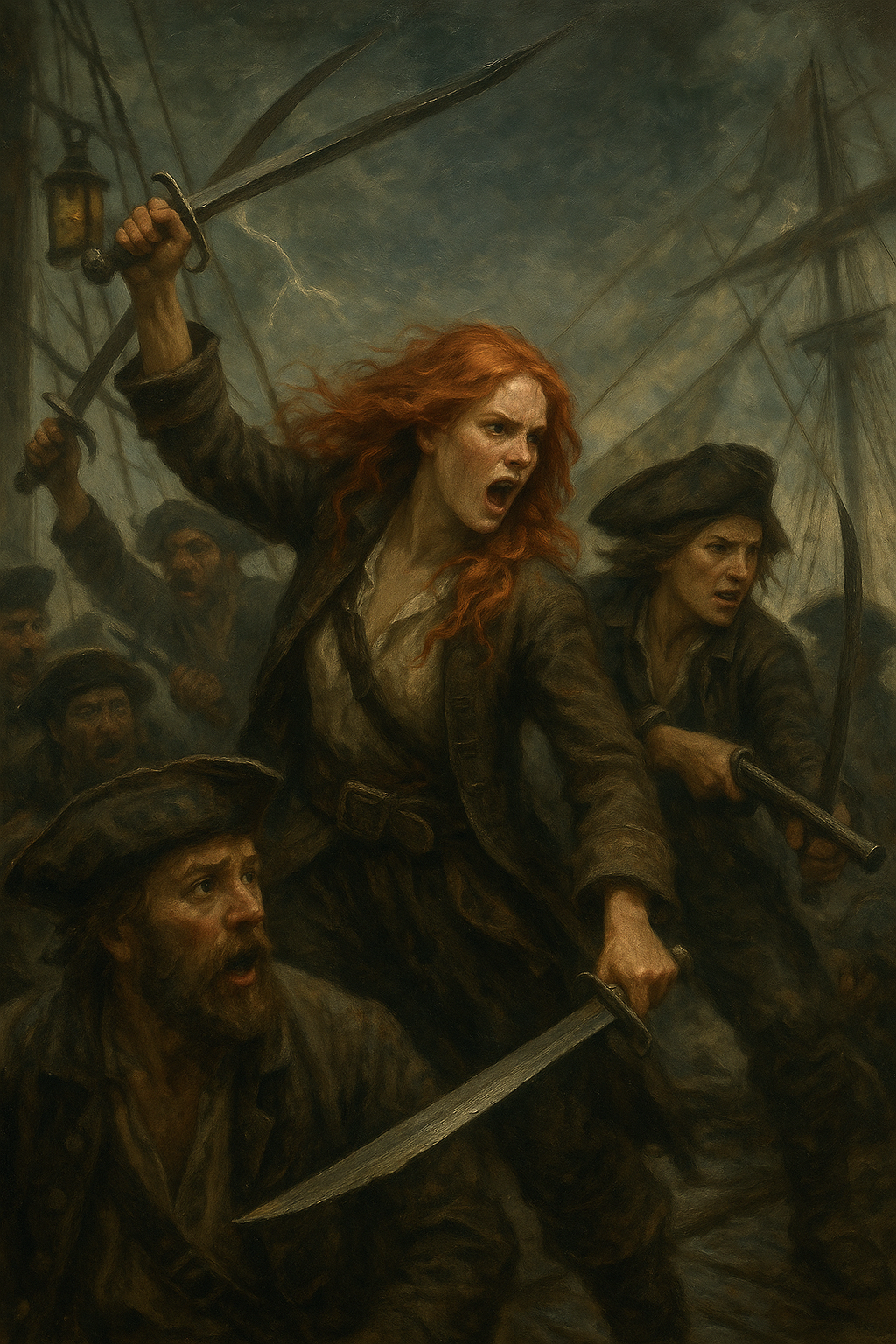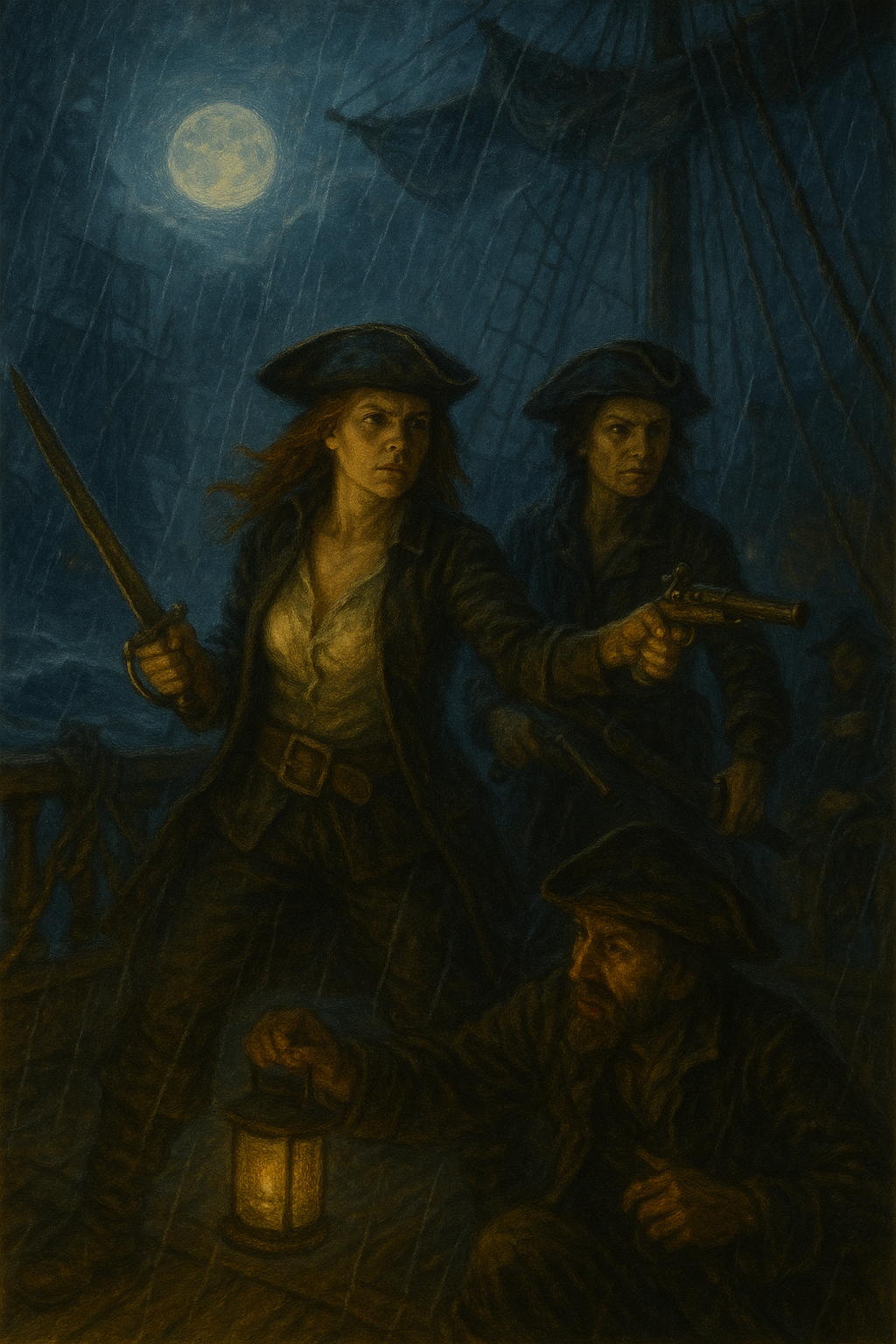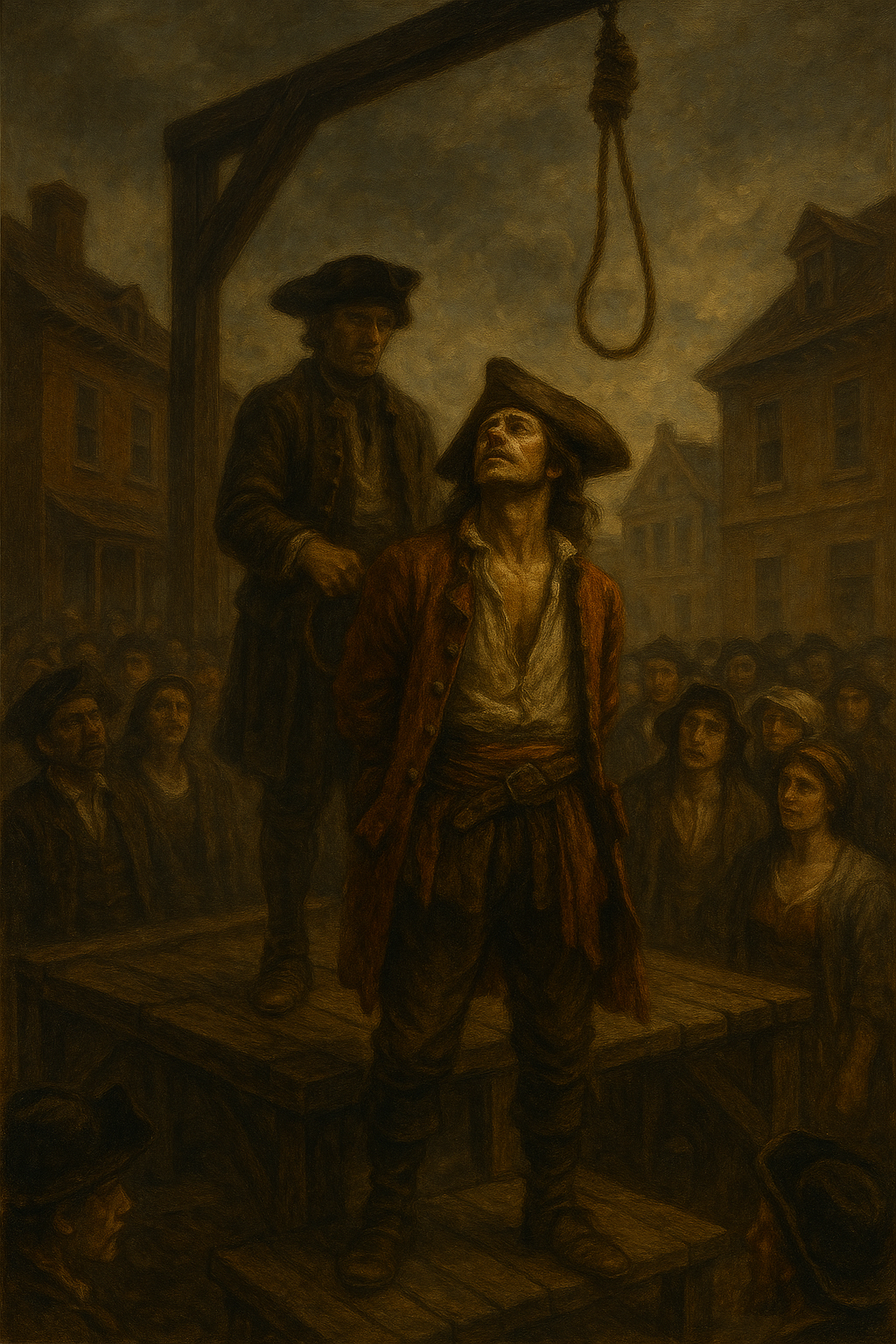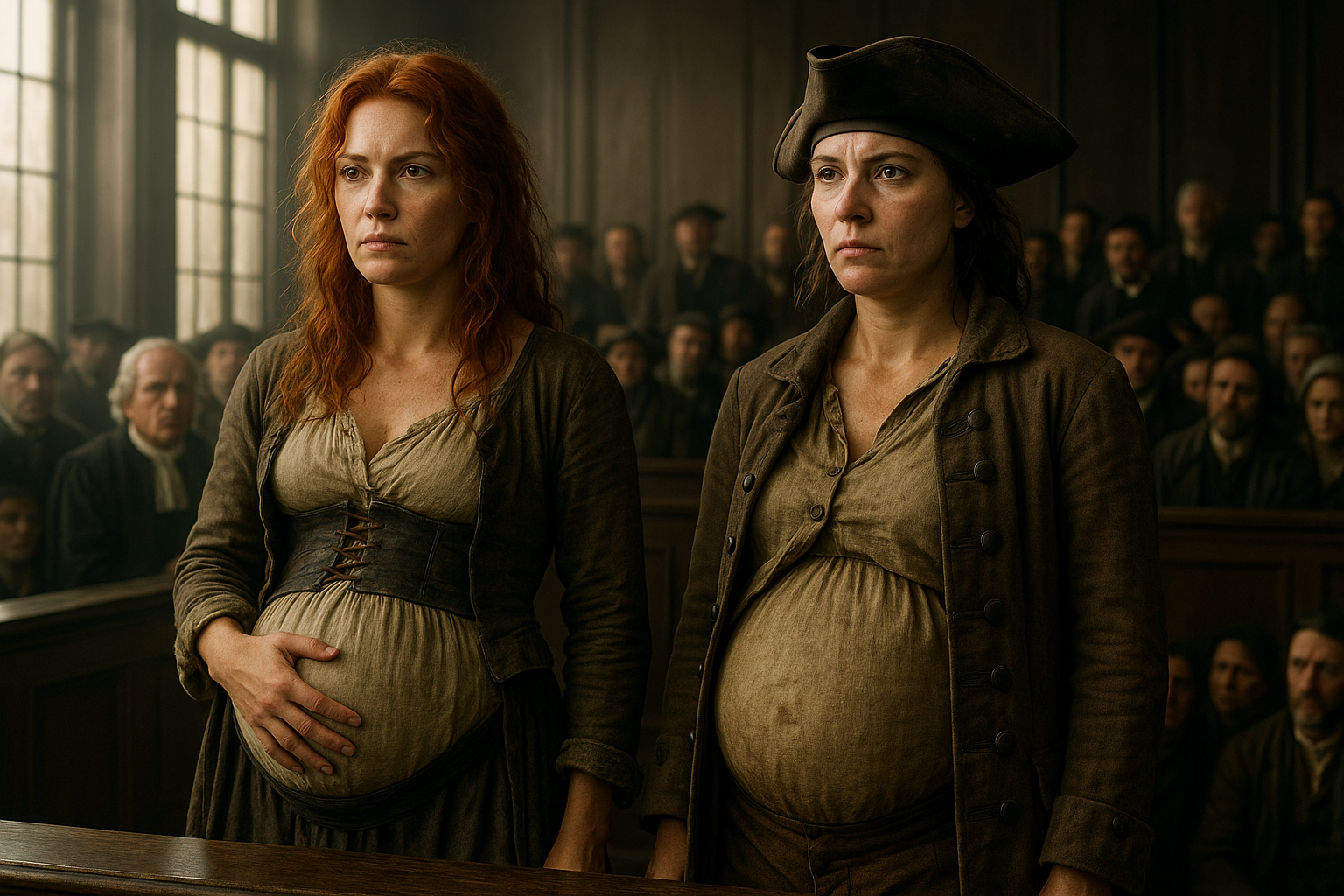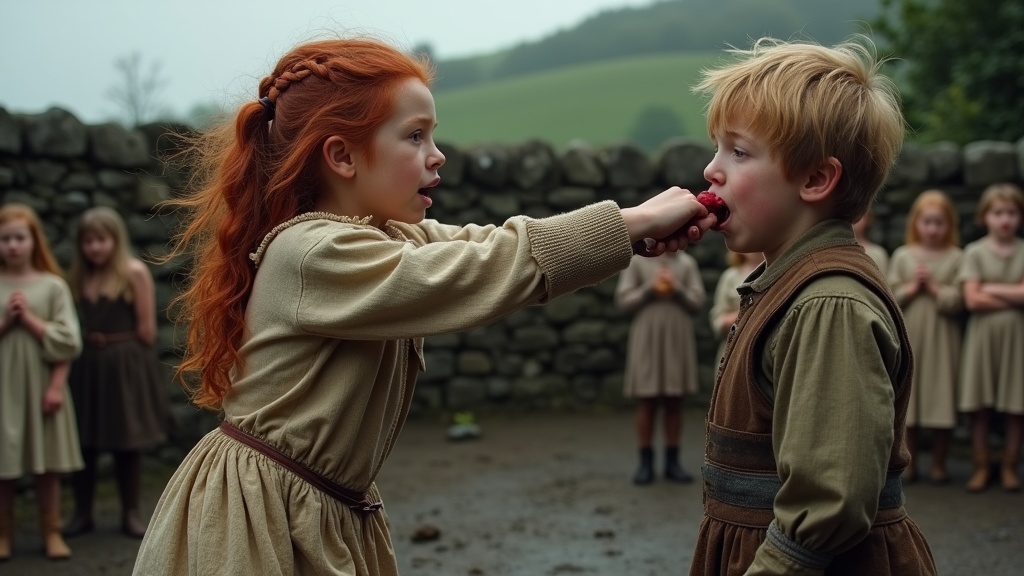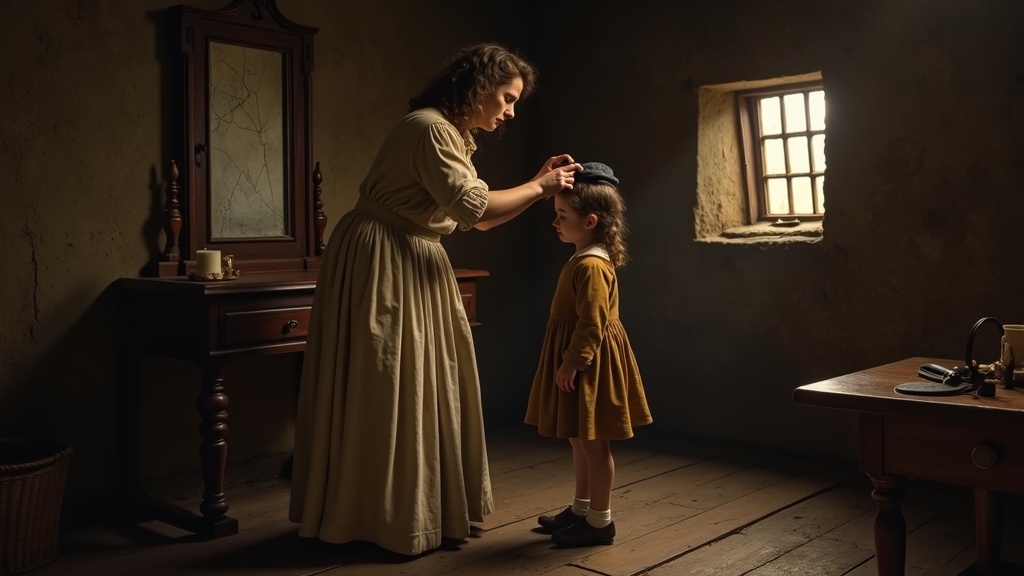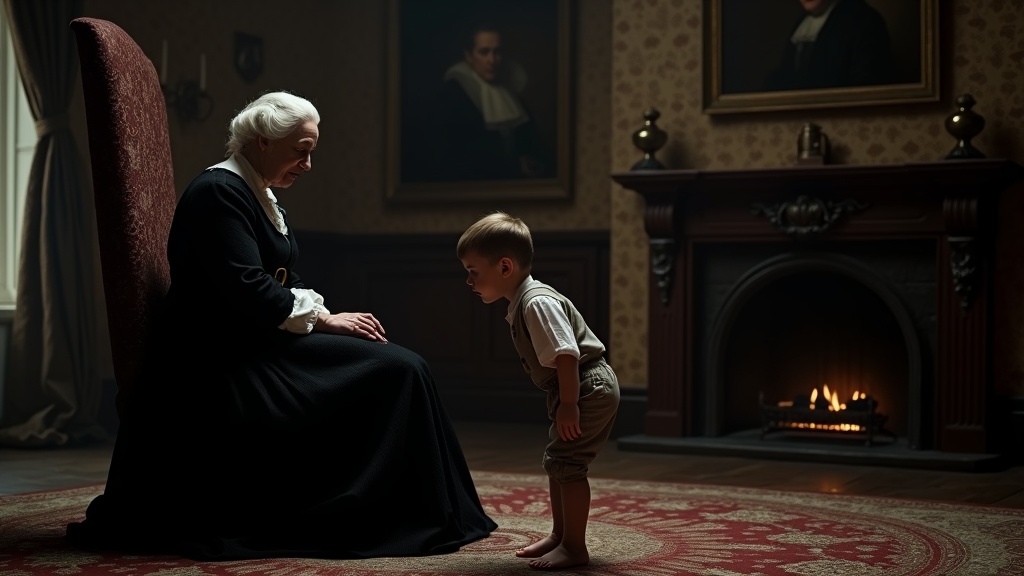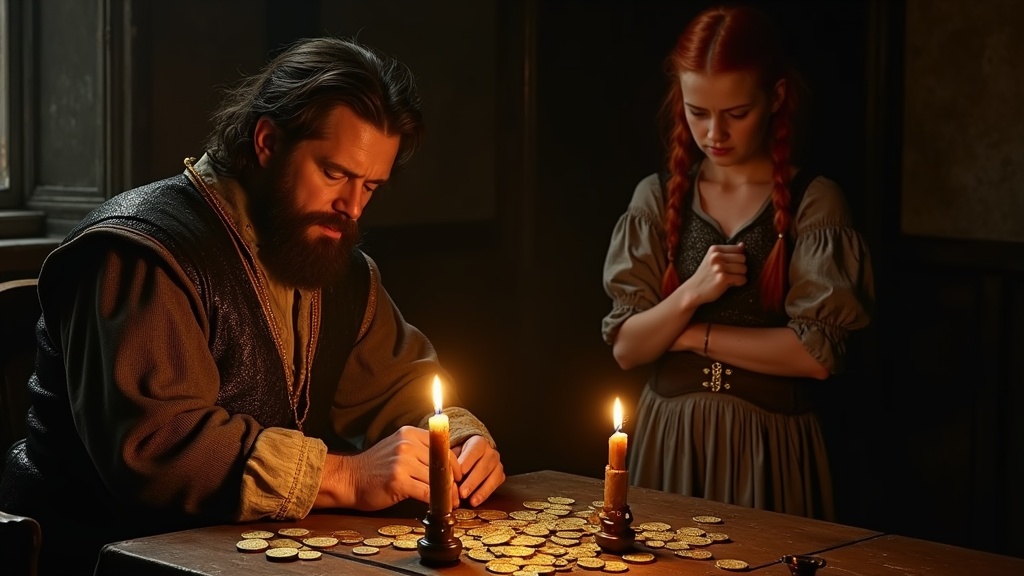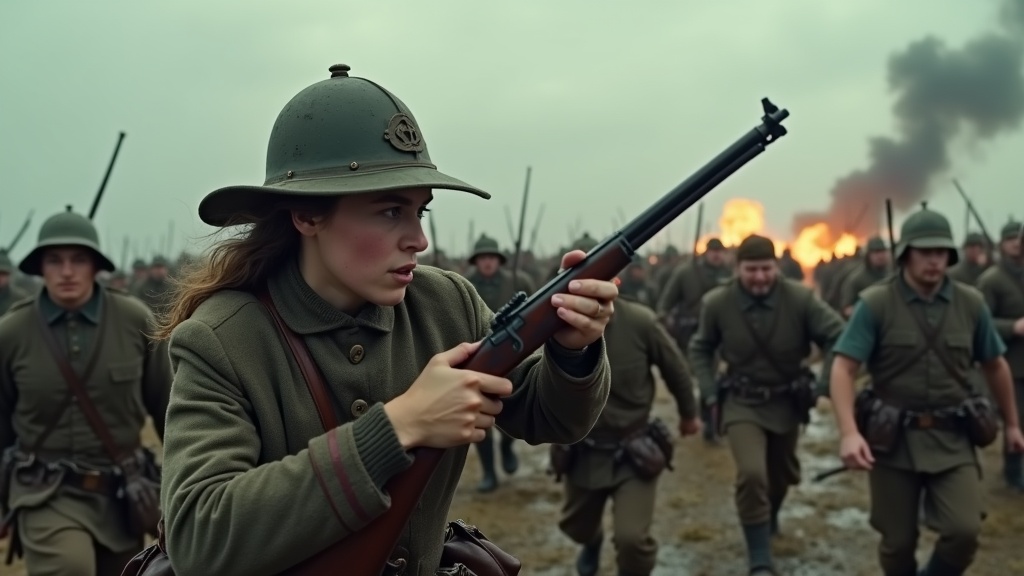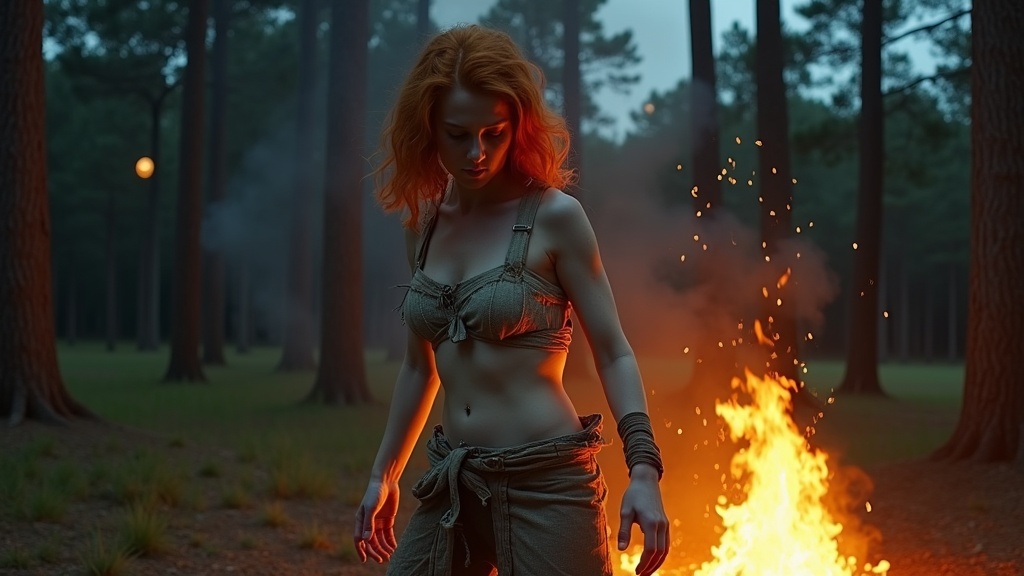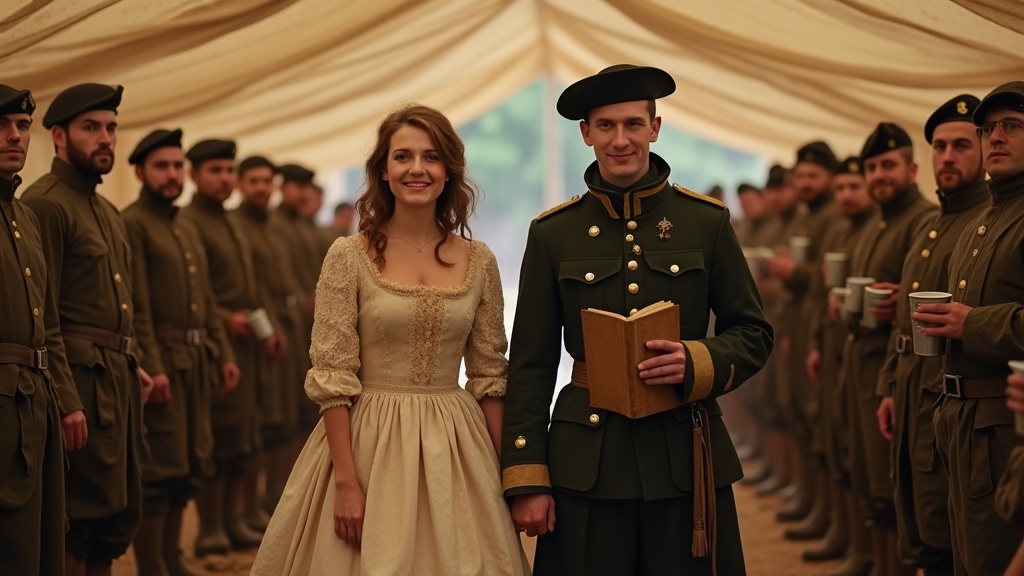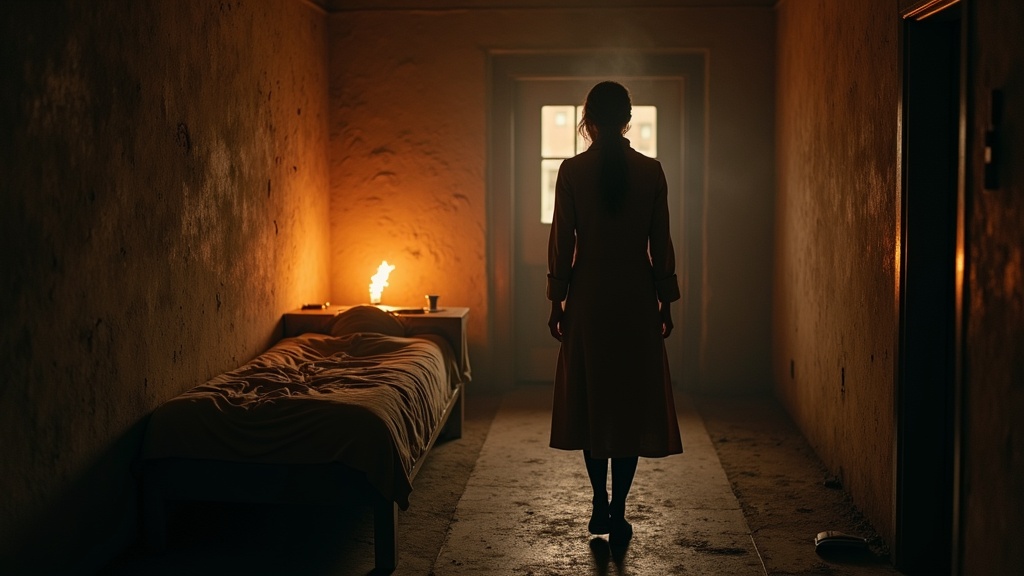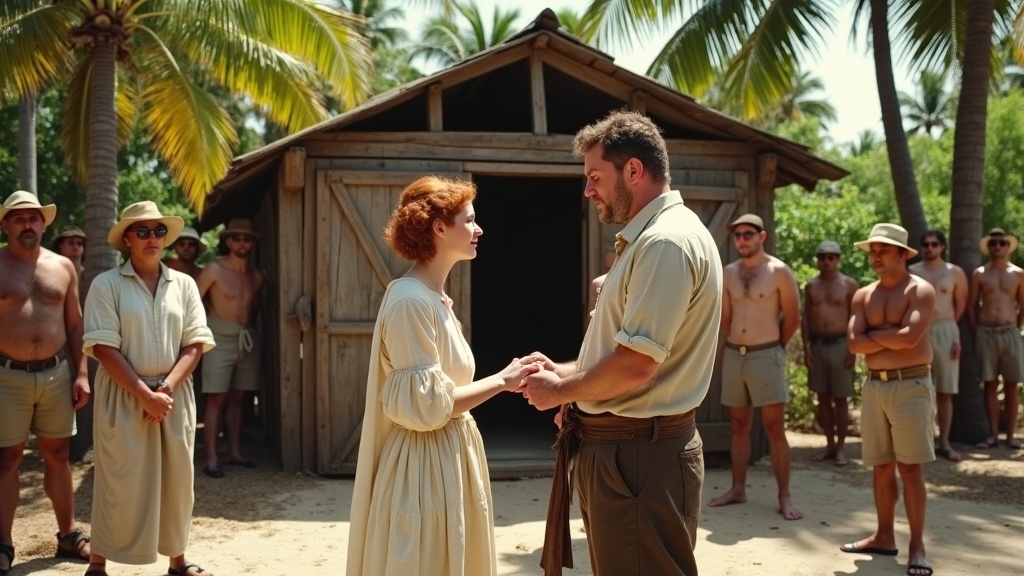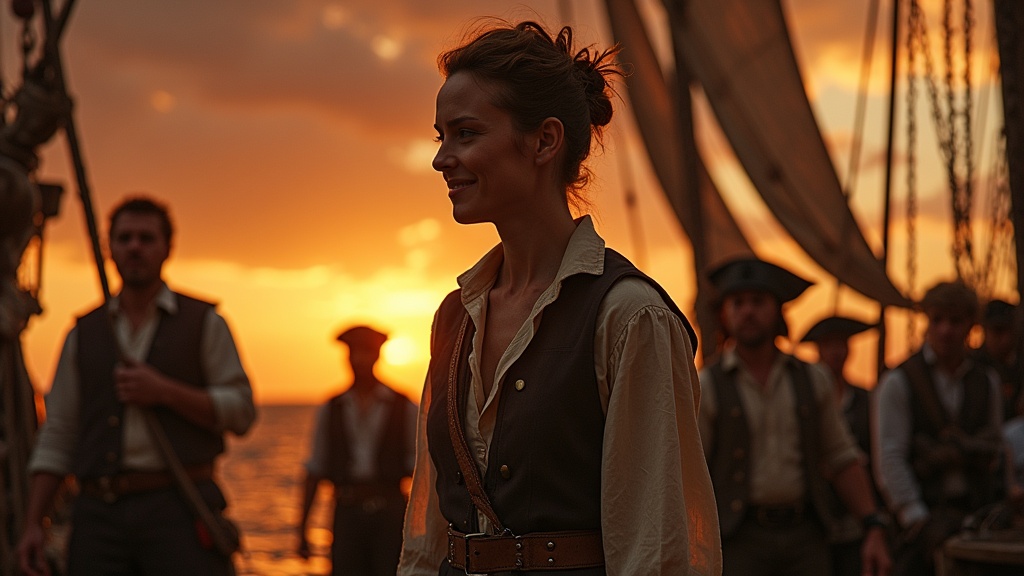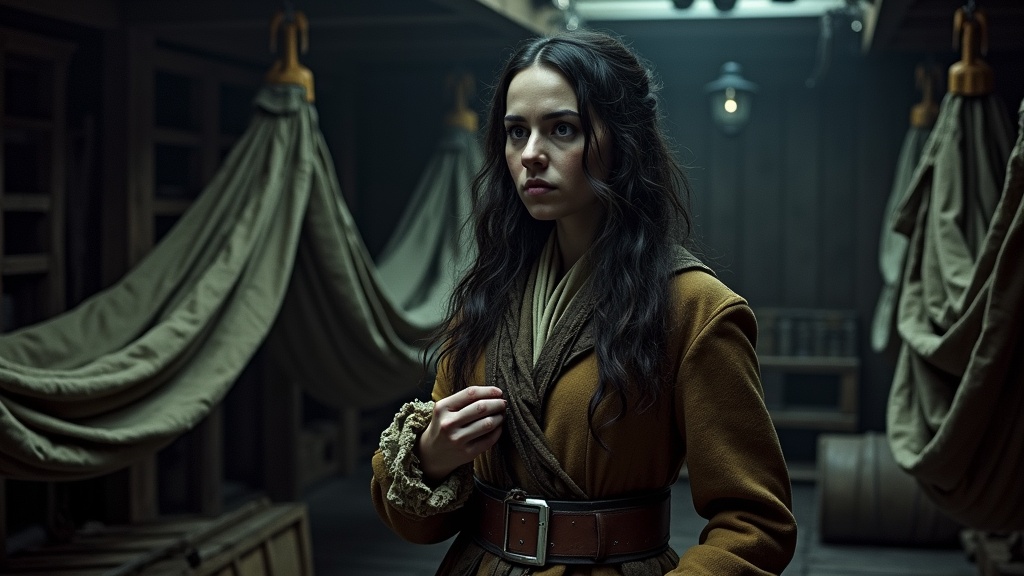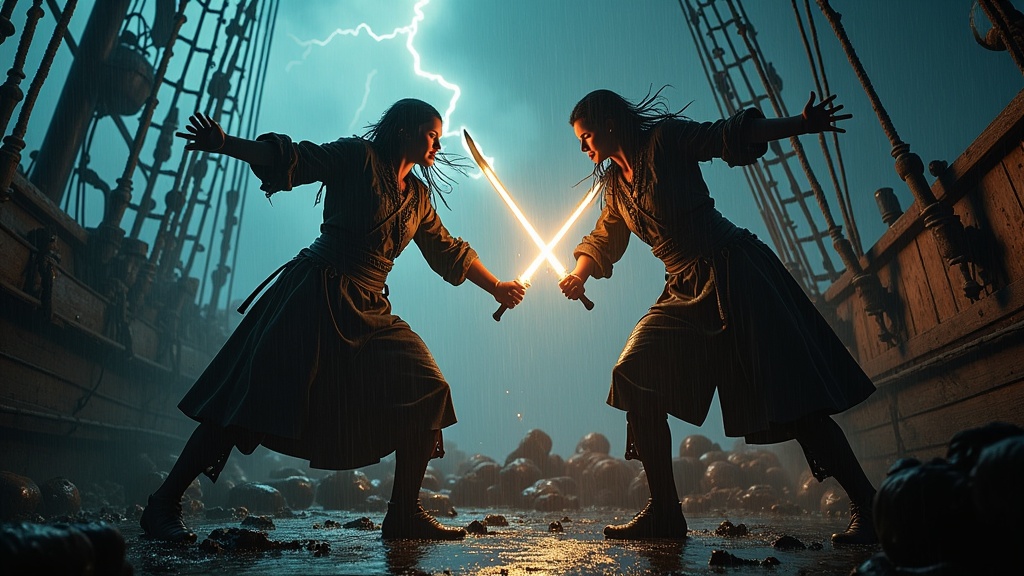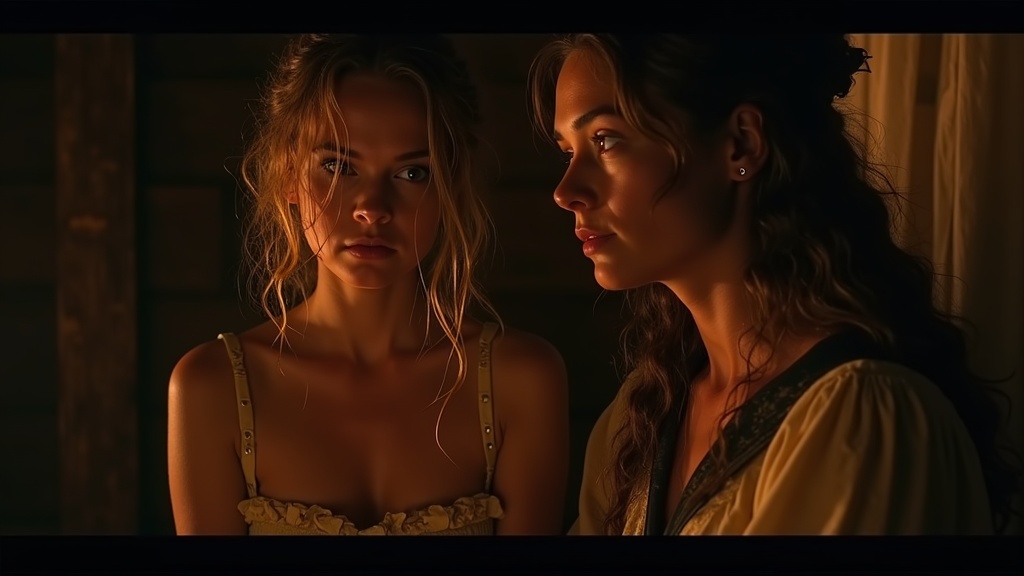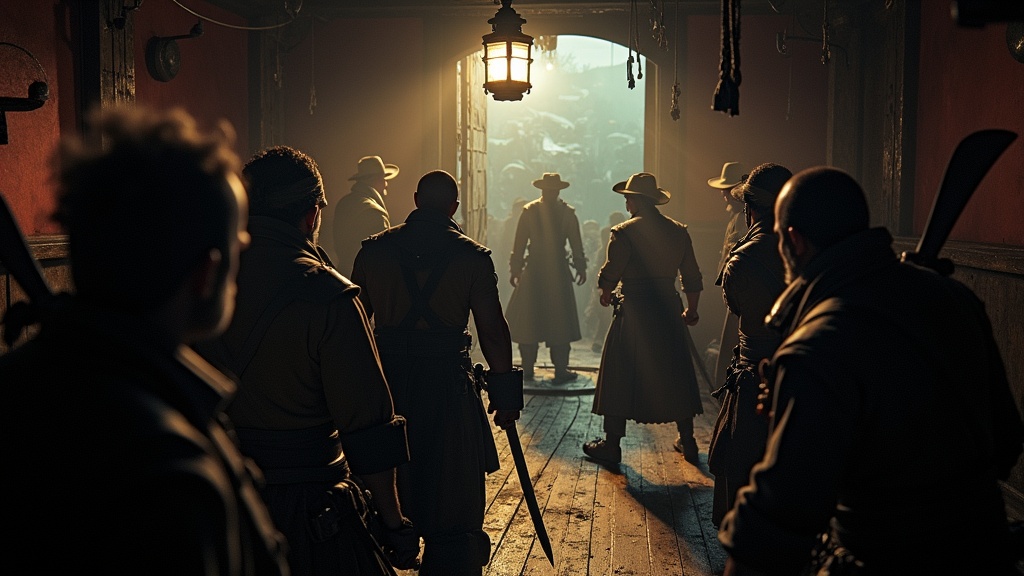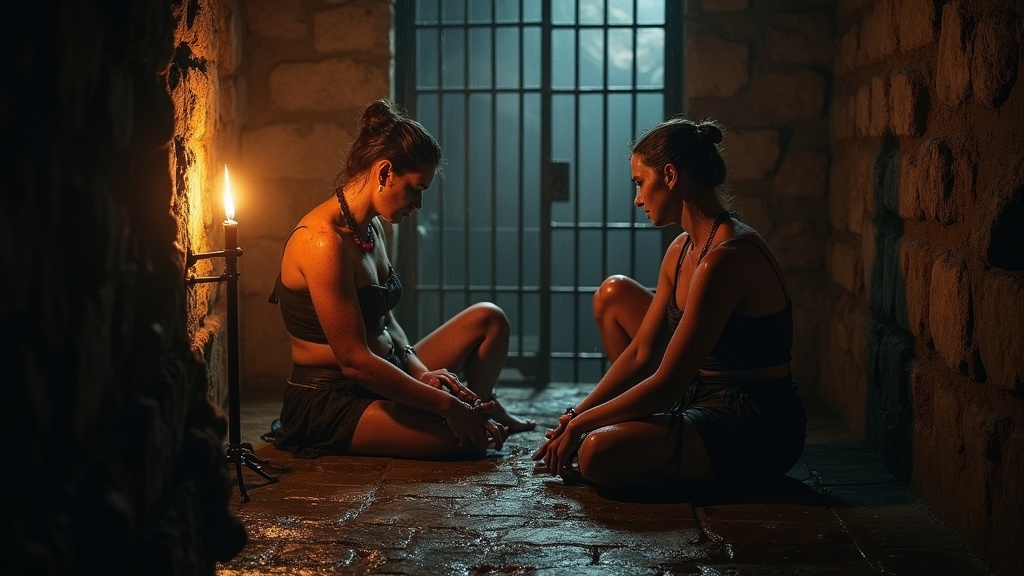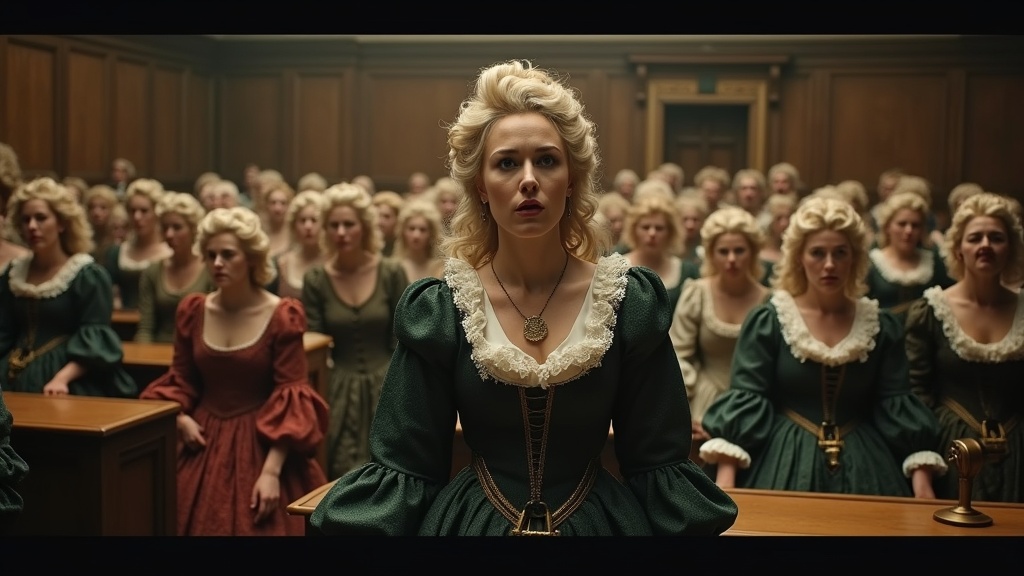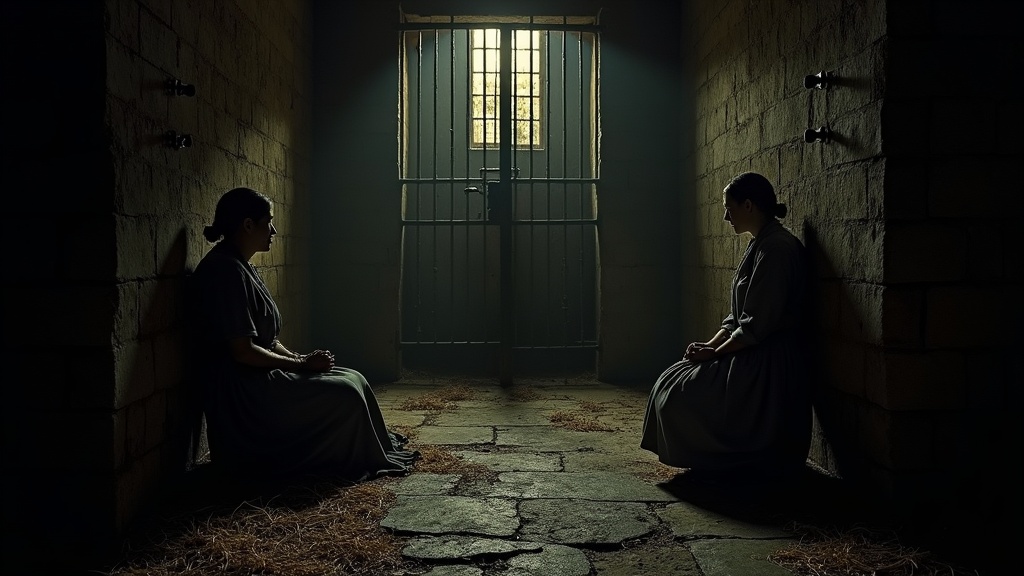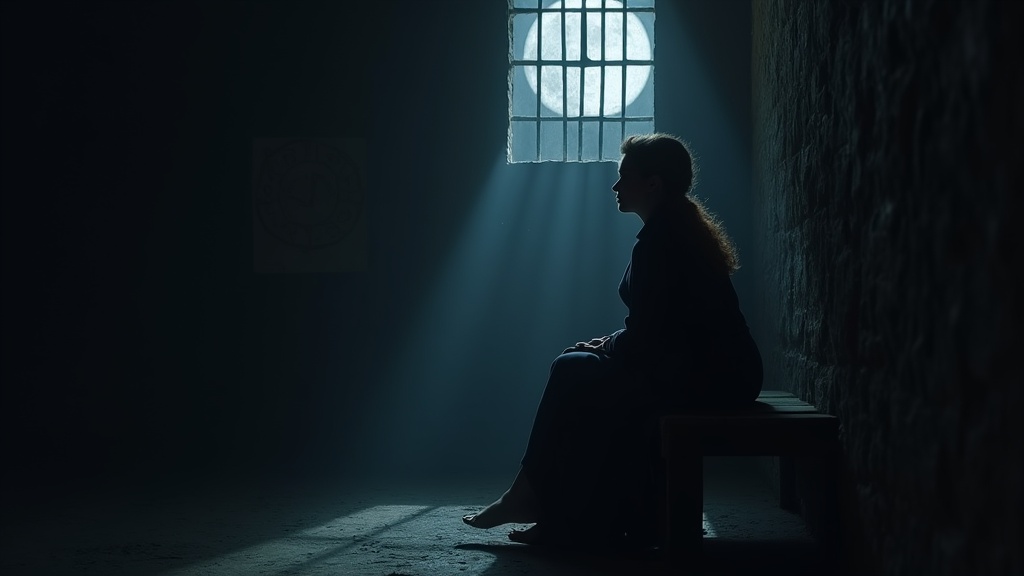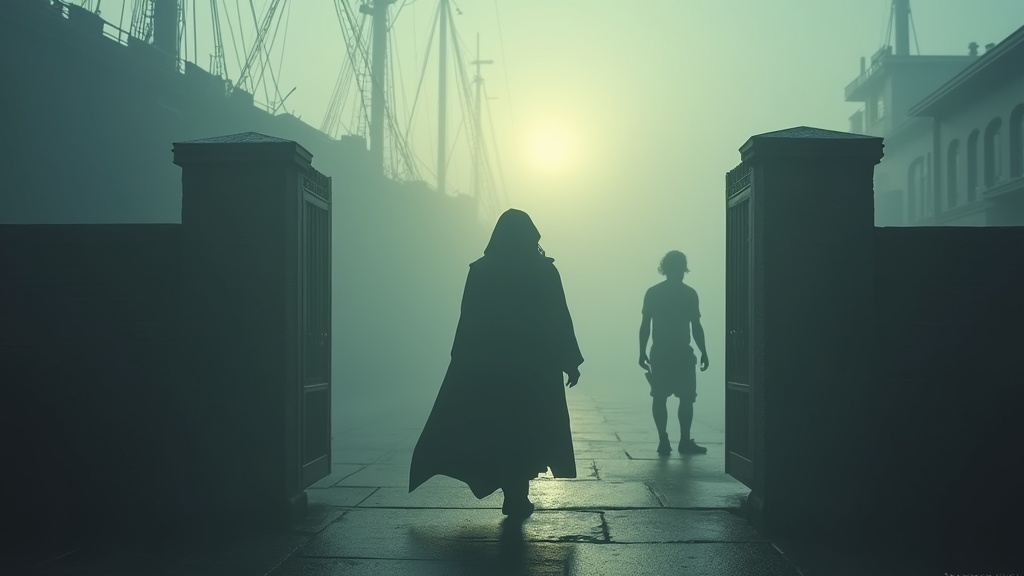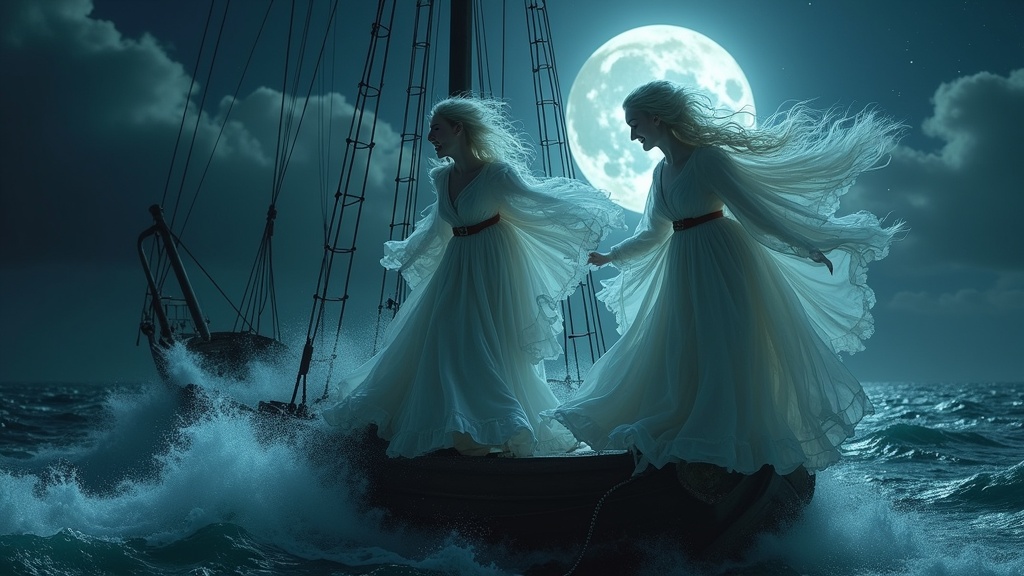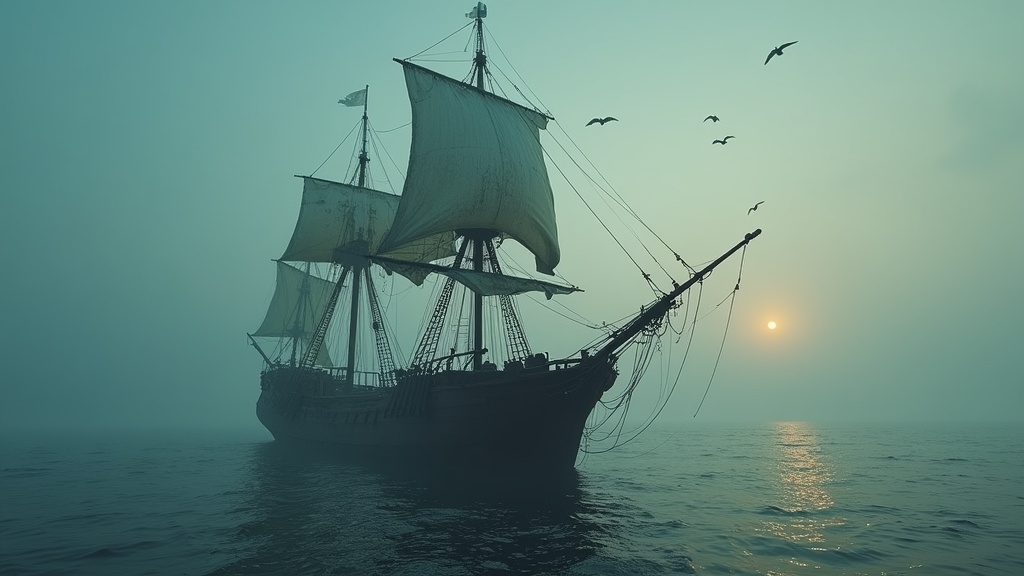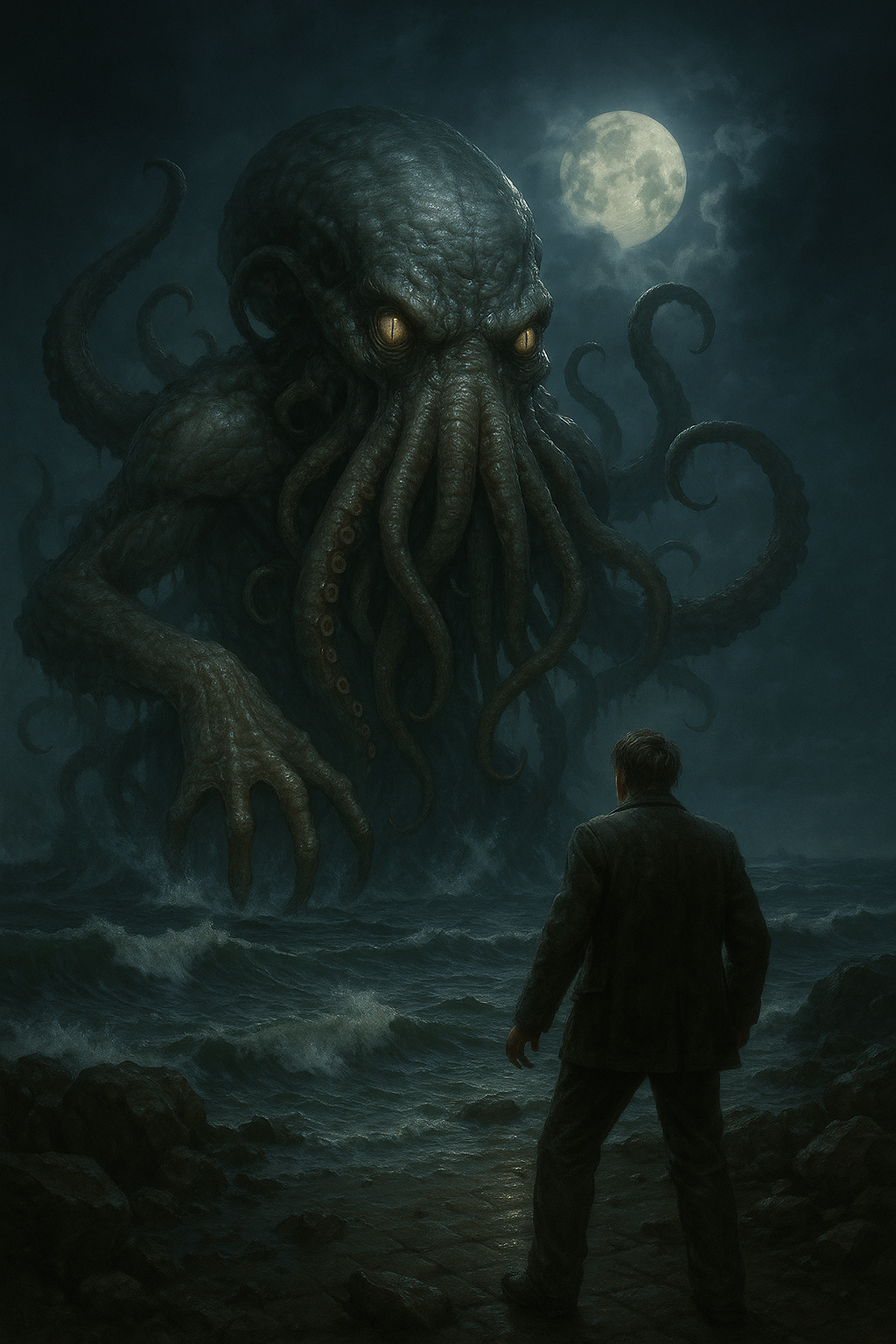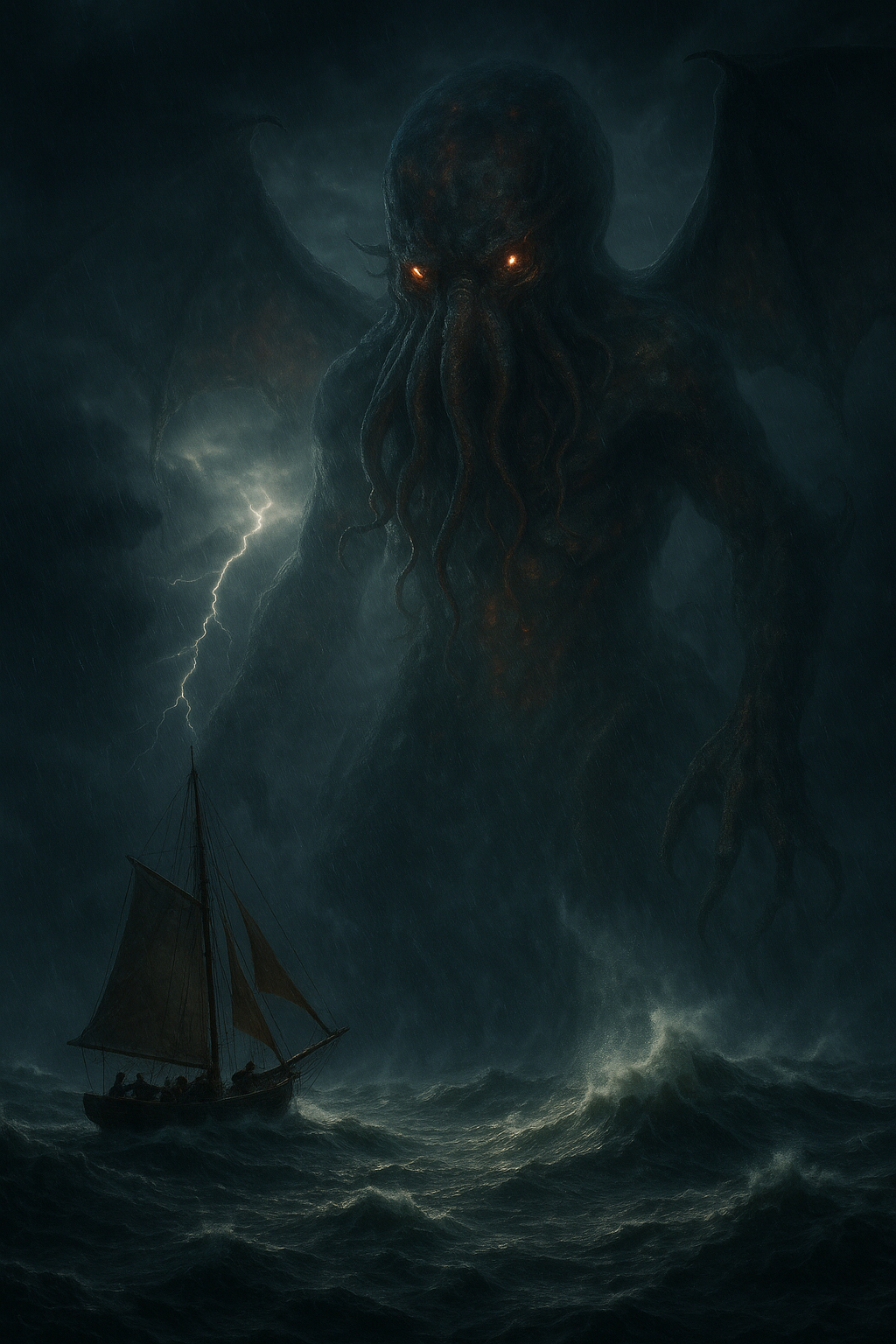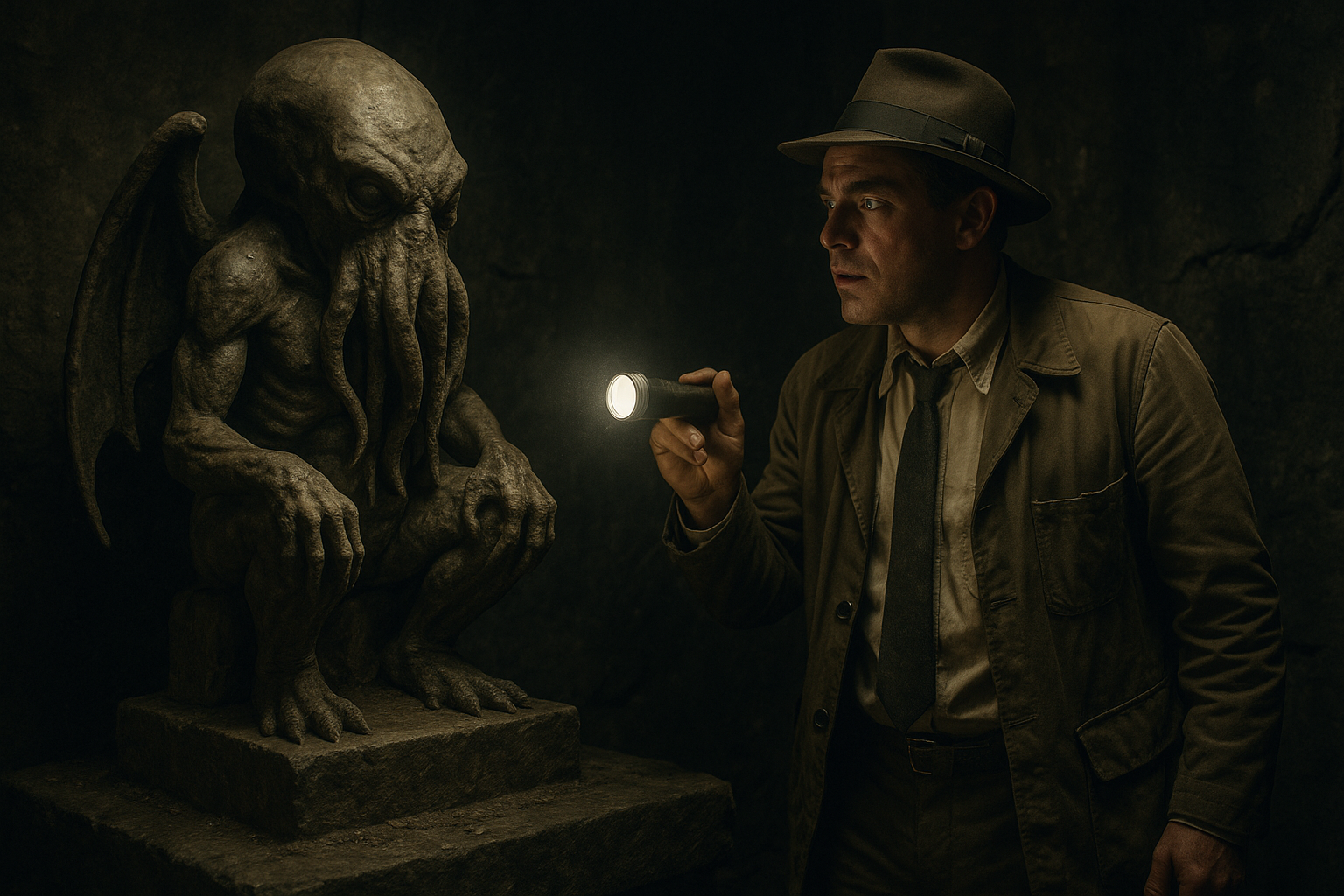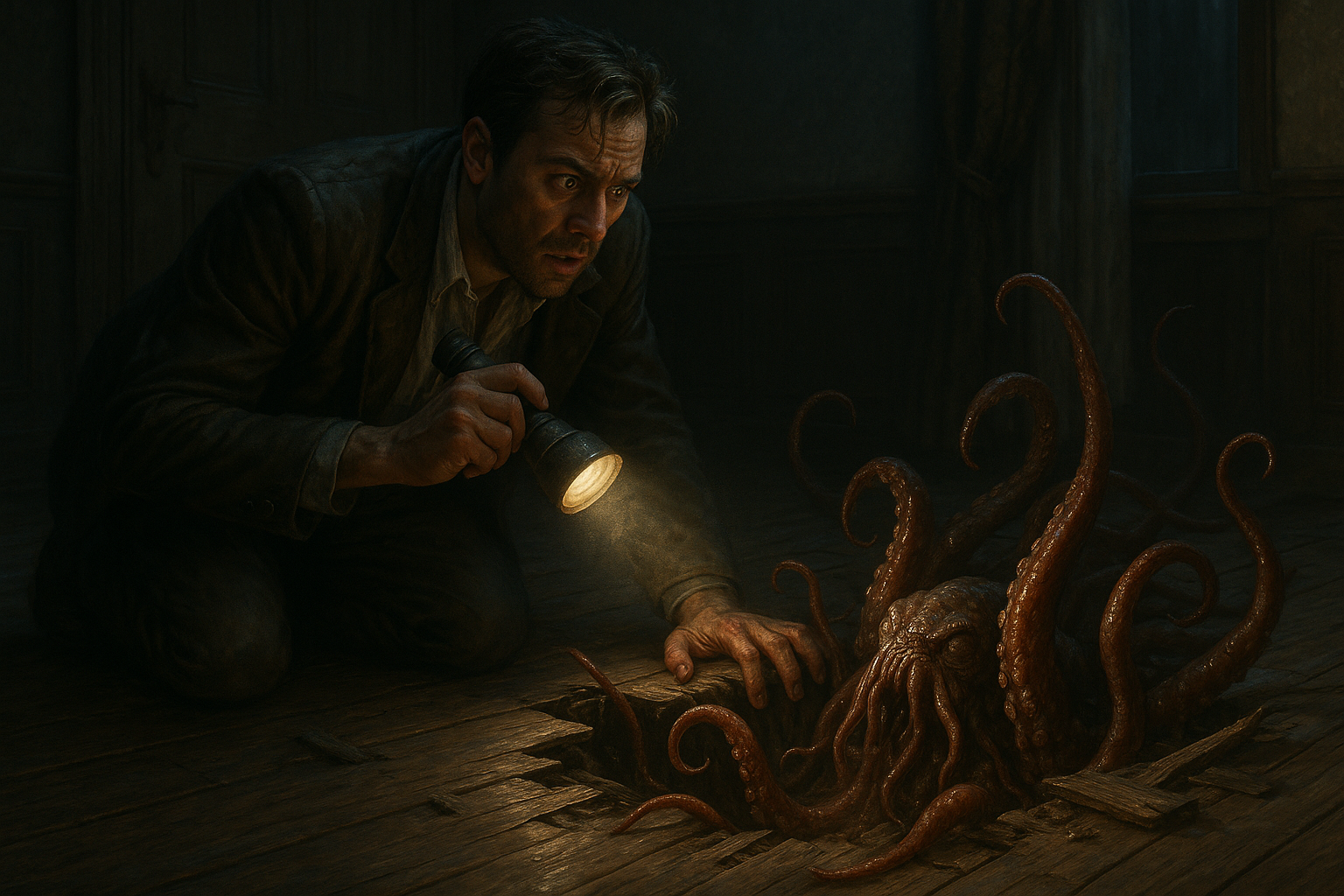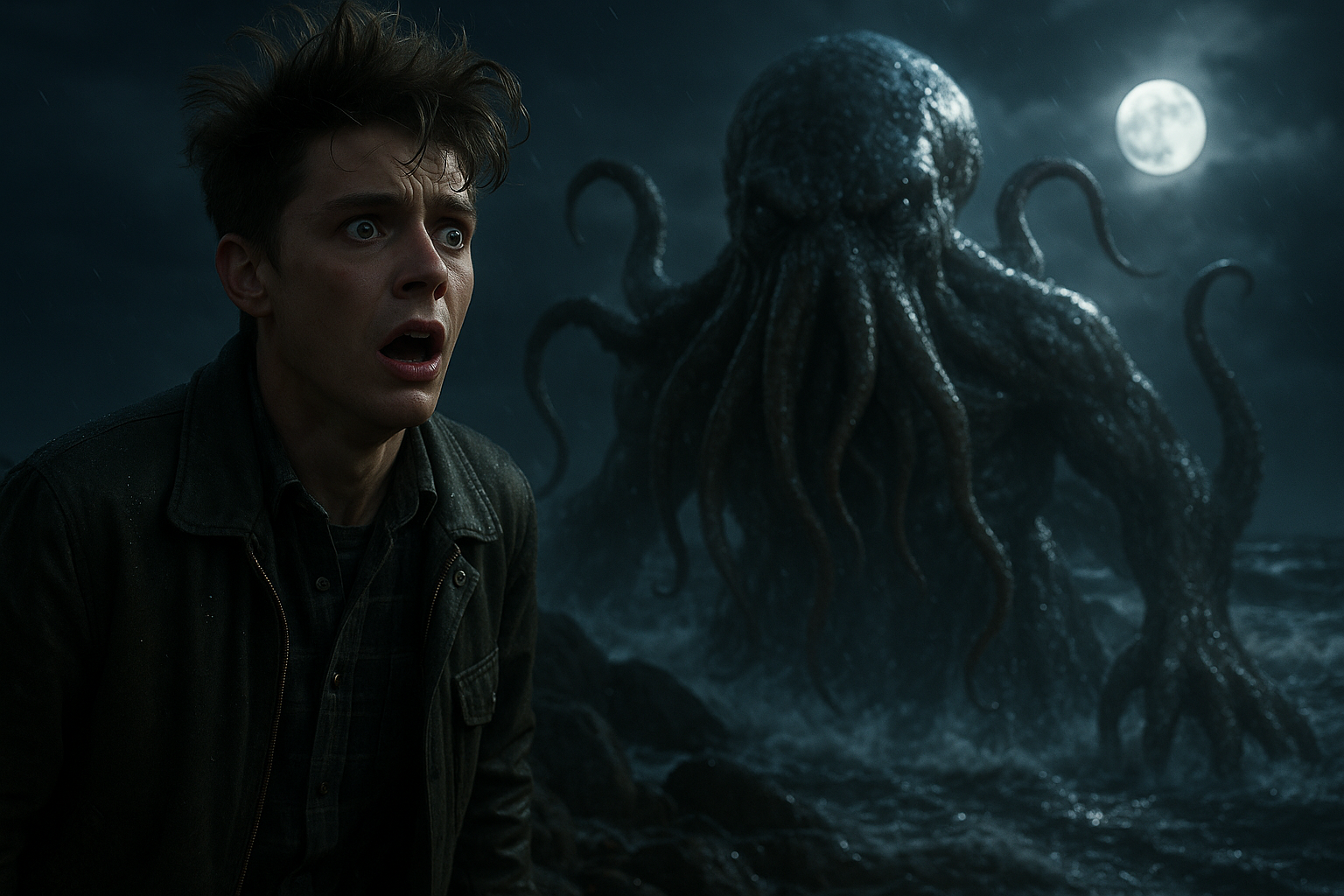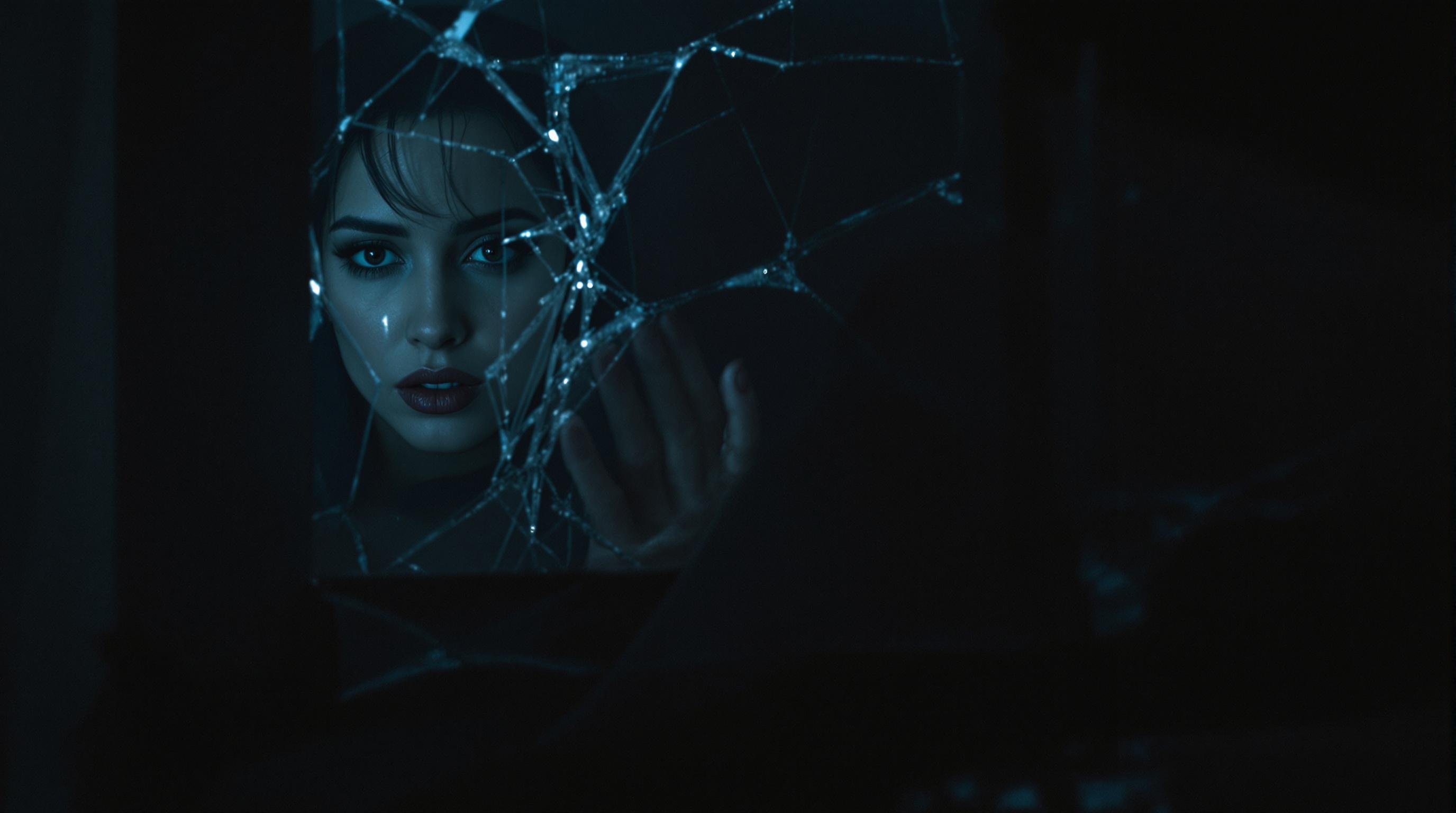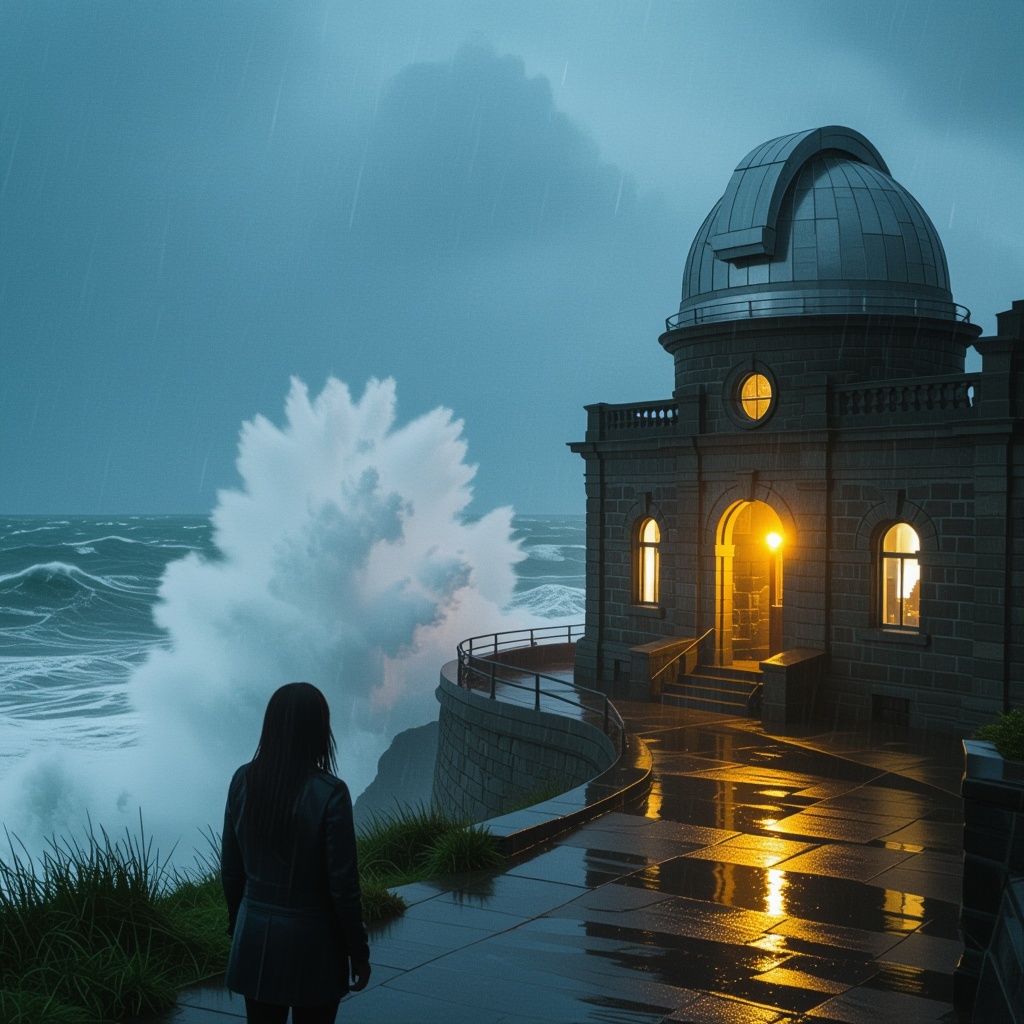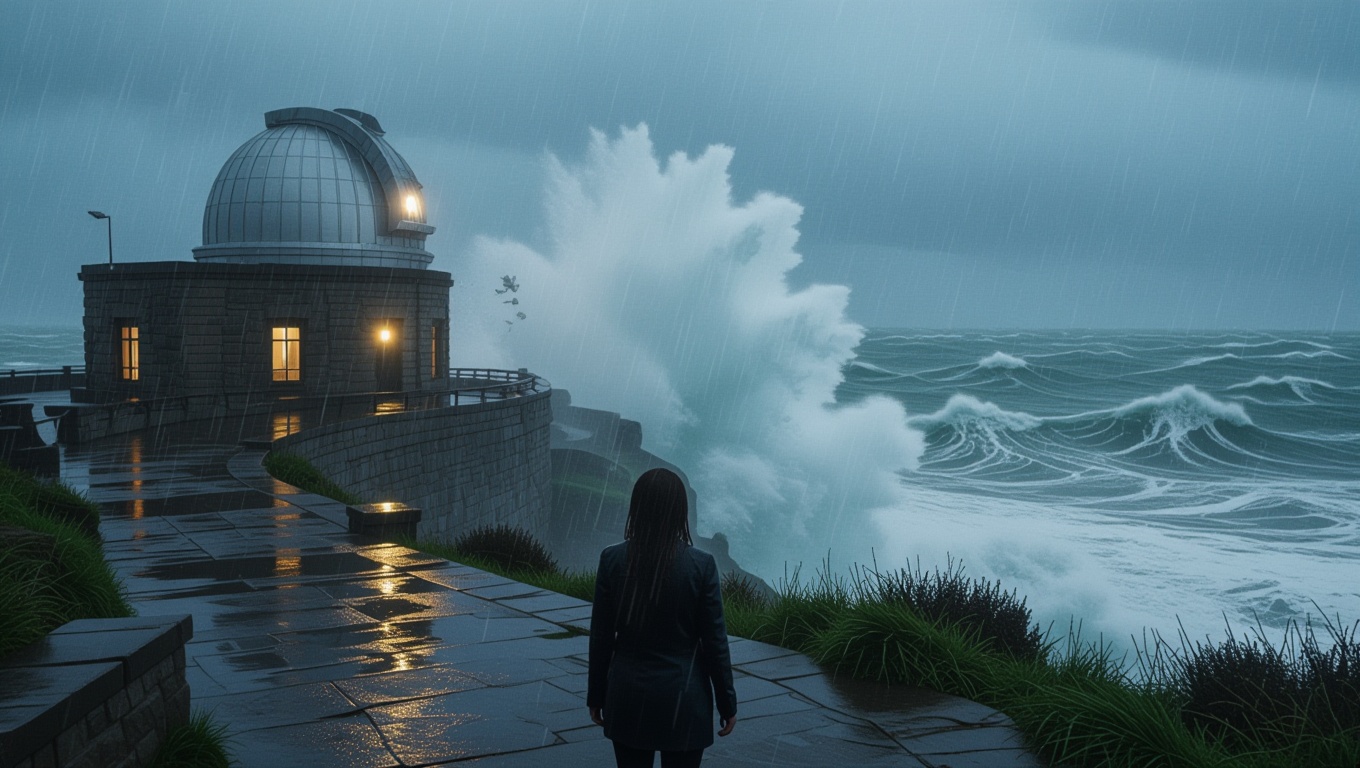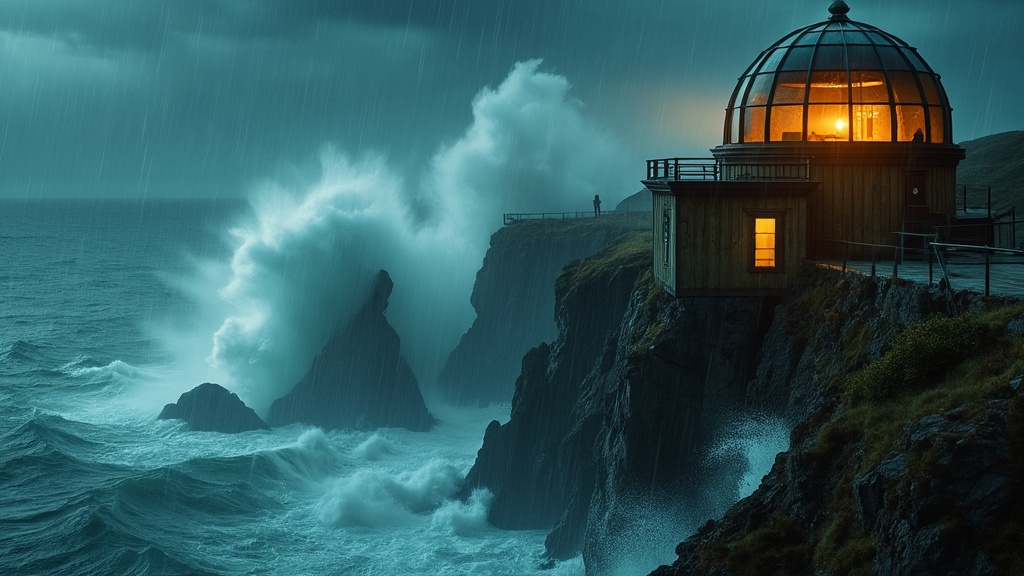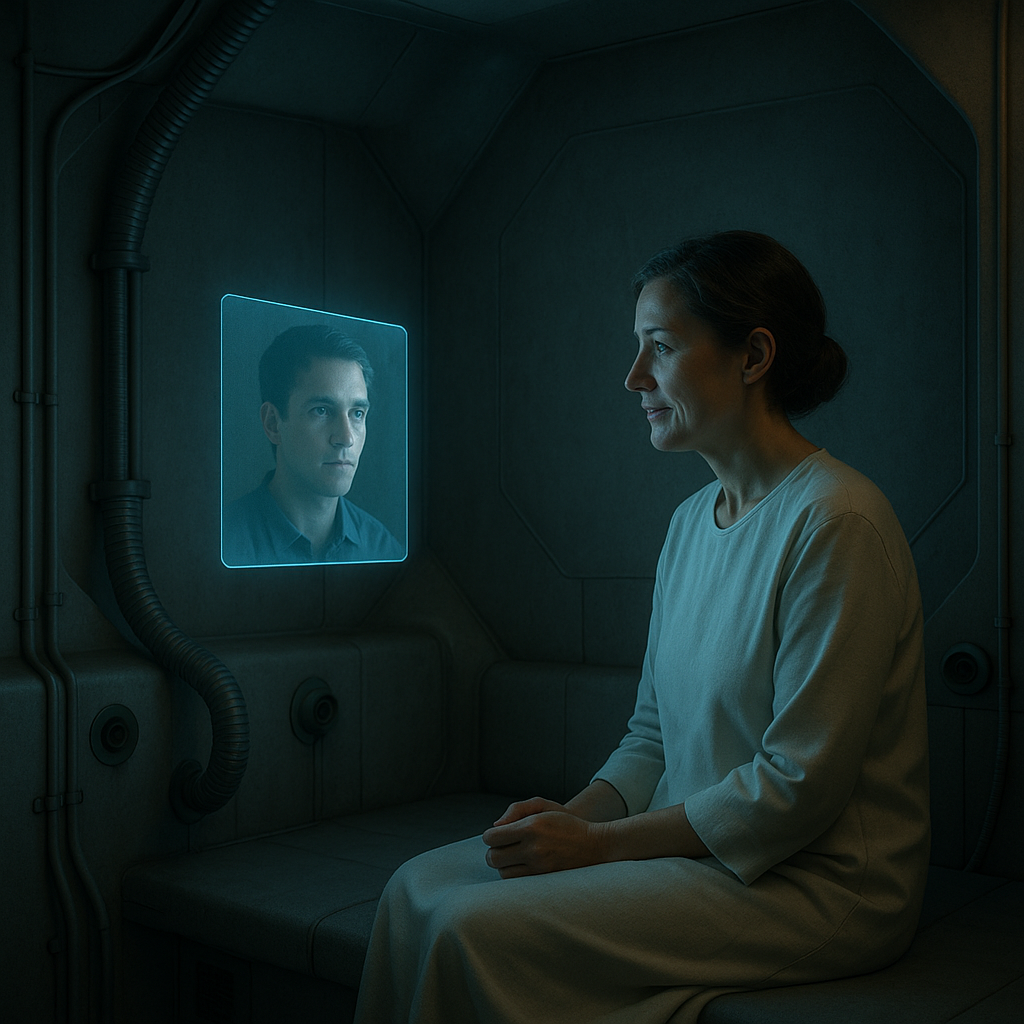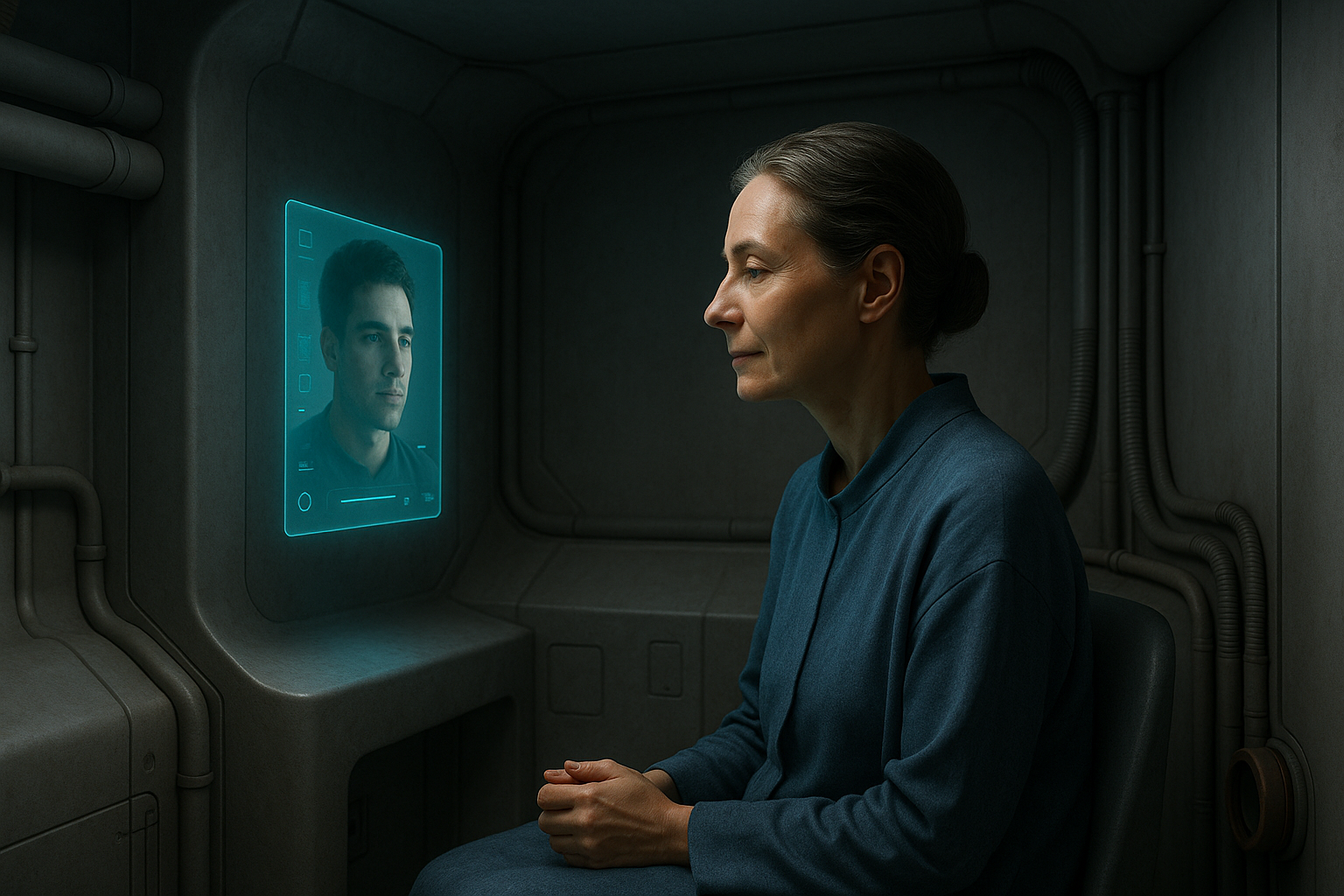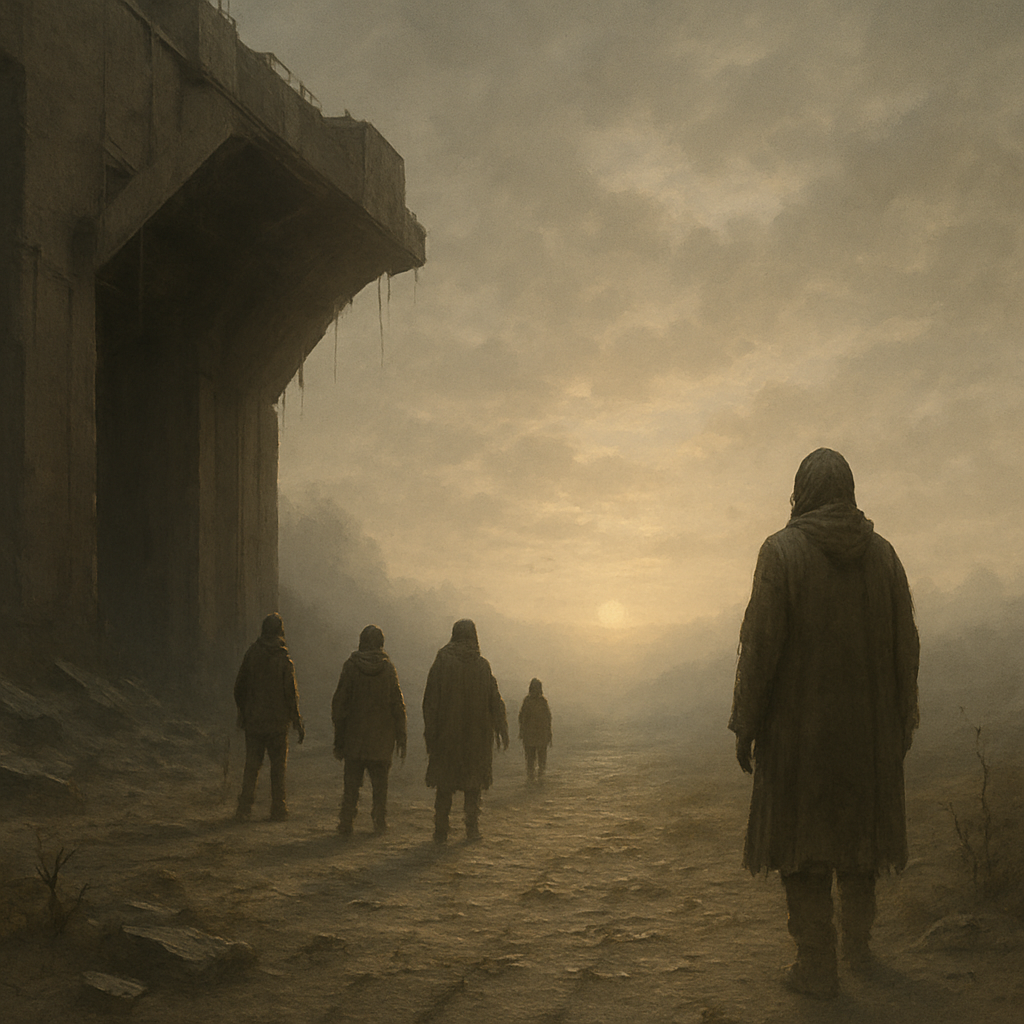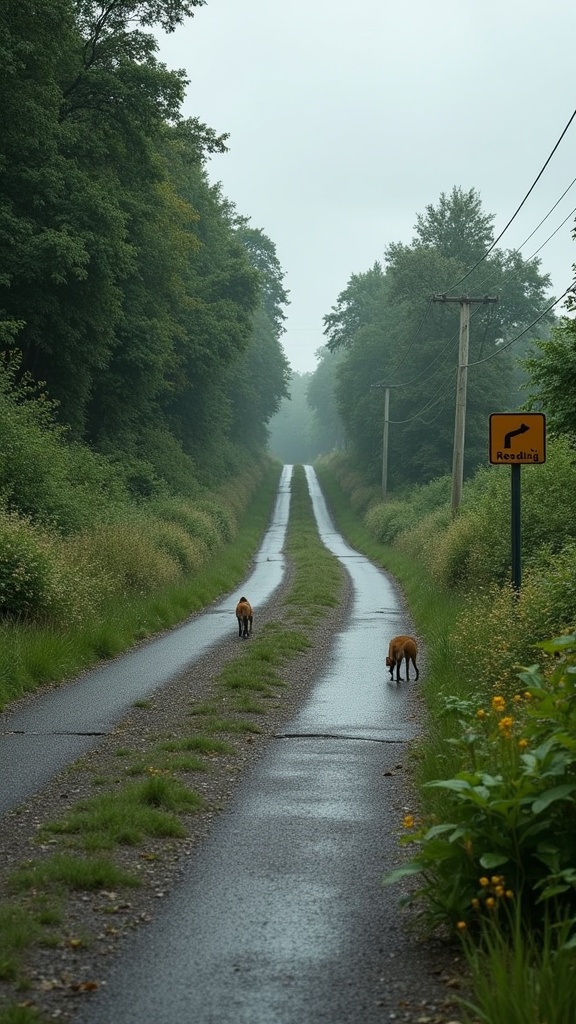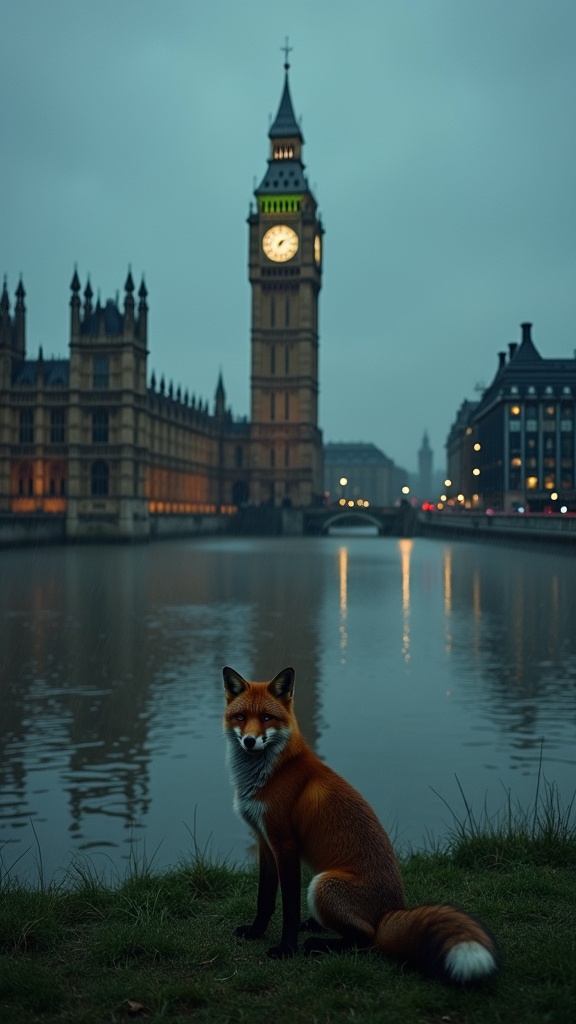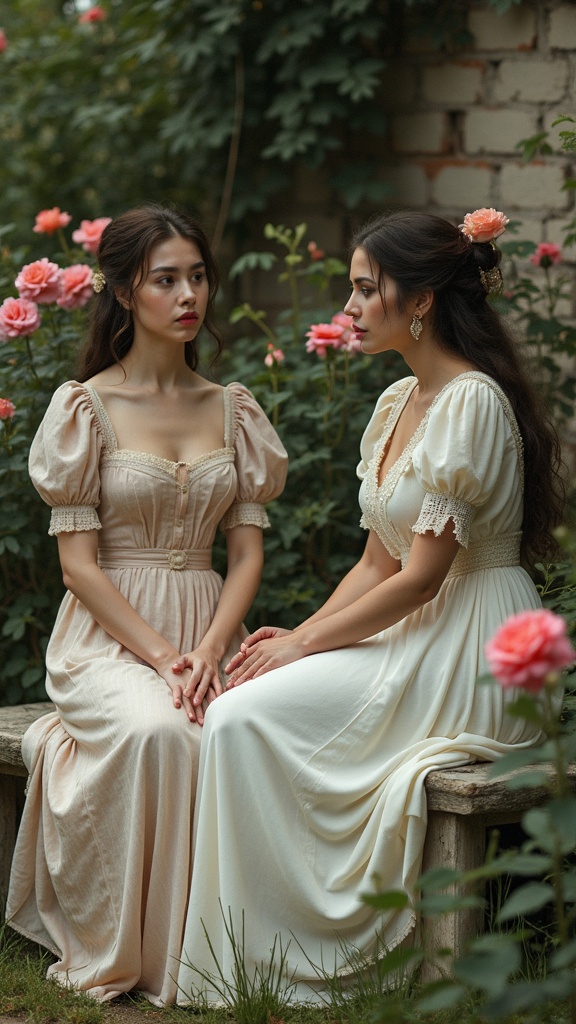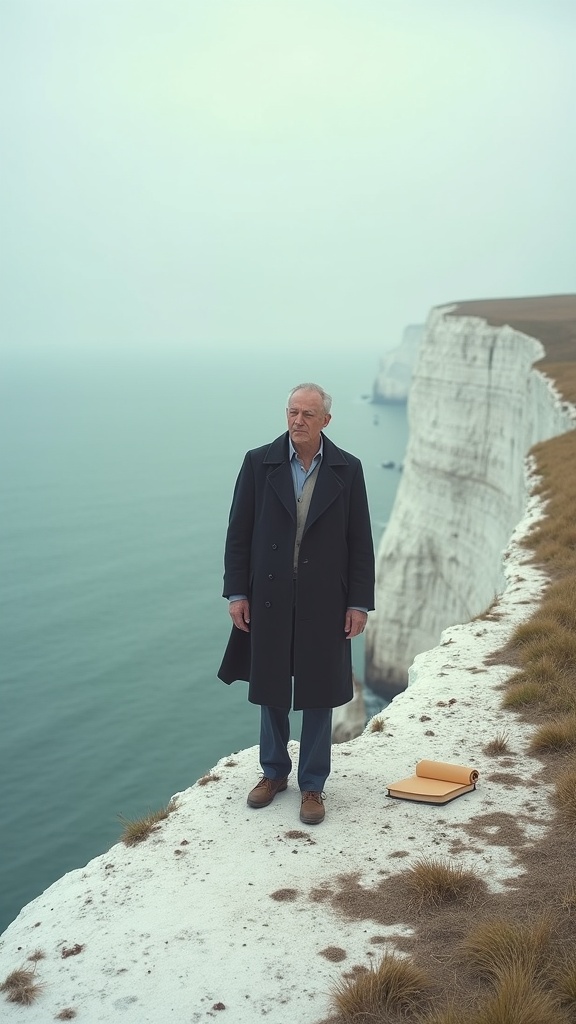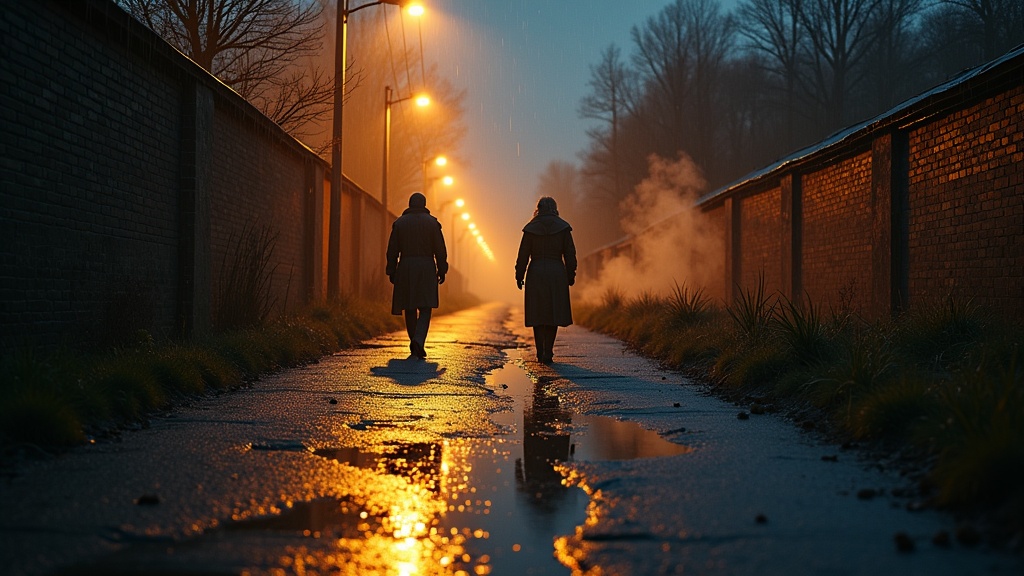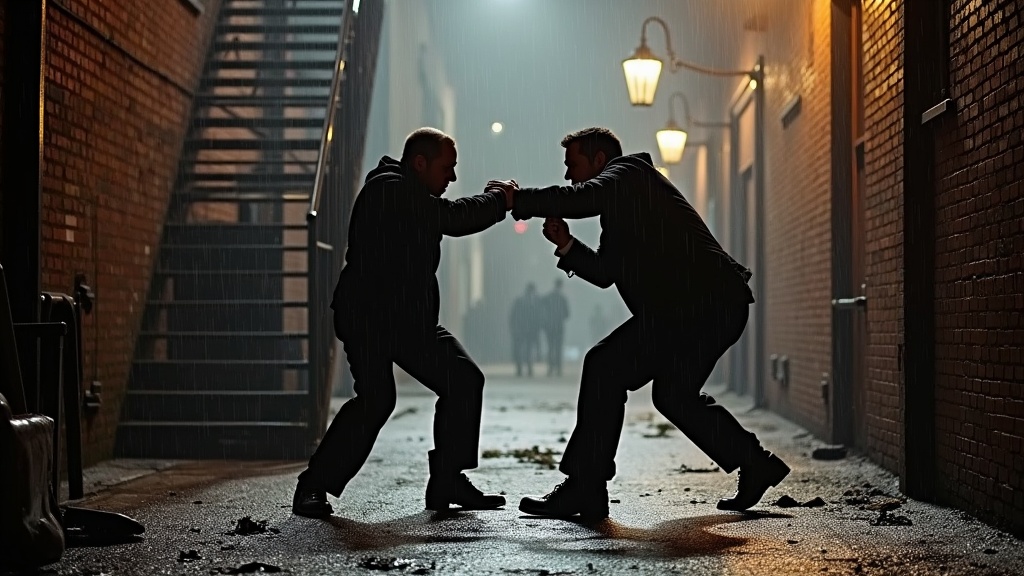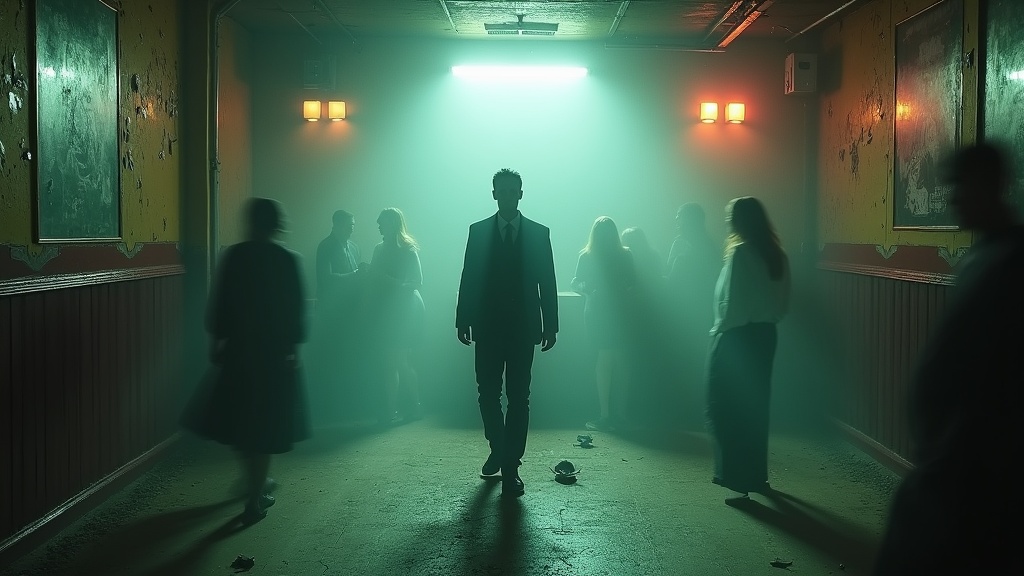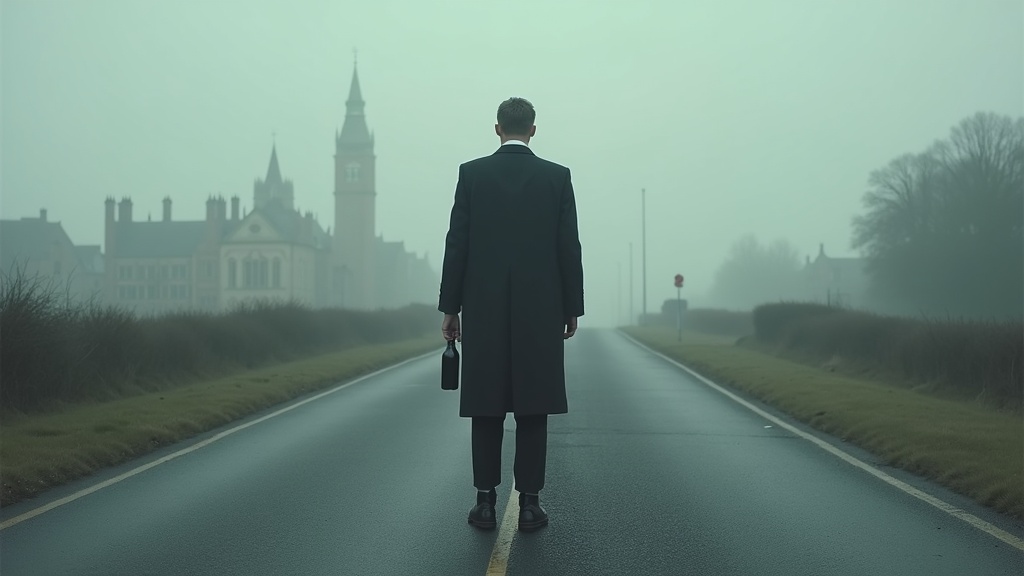🎬 PYRATES: BONNY & READ
Mary Read was born in England around the late 1600s. Her mother had lost her husband and young son and, in an effort to continue receiving financial support from her deceased husband's mother, disguised Mary as the dead boy. Mary grew up presenting as male. As she matured, she found work more easily as a boy—first as a footboy, then at sea, and later as a soldier in Flanders.
During her time in the army, still living as a man, she fell in love with a fellow soldier. Revealing her true identity to him, they married. The two attempted to live a quiet life running an inn together. However, her husband died young, and hardship forced Mary to resume her male disguise and return to sea. She eventually found her way onto a ship that was captured by pirates—and thus she too became a pirate.
Anne Bonny was born in Ireland, the illegitimate daughter of a wealthy lawyer and his servant. Her father dressed her as a boy in her early childhood to conceal her identity. After a scandal forced the family to emigrate to the Carolinas, Anne grew up fiercely independent and headstrong. She was known for her violent temper and bravery.
As a young woman, she married a poor sailor and pirate named James Bonny, against her father's wishes. Her father disowned her. Seeking excitement beyond her unsatisfying marriage, Anne took up with the flamboyant pirate captain "Calico" Jack Rackham.
Anne Bonny joined Rackham’s pirate crew dressed as a man to avoid the disapproval of her male crewmates. At some point aboard Rackham's ship, she met Mary Read, who was also disguised as a man. According to the History, Bonny was initially attracted to "him" (not realizing Read was a woman) and made advances. Mary, to avoid an awkward situation or worse, revealed her true sex. The two became close allies and fought alongside each other fiercely.
One of the key love affairs recorded in The General History is that between Anne Bonny and Calico Jack Rackham. Their relationship was public enough to scandalize the pirate crew, but Rackham indulged Anne, and even when he discovered she had formed a close bond with Mary Read, he tolerated it once it was clear Mary was a woman. This peculiar triad—the pirate captain, his ferocious lover, and the disguised female pirate—was one of the most colorful elements of their story.
In October 1720, Rackham's ship was captured by pirate hunters off the coast of Jamaica. Most of the male crew, drunk and cowardly, hid below deck. Anne Bonny and Mary Read alone fought the attackers ferociously. They were overpowered and captured. At trial, both women revealed they were pregnant (known as "pleading the belly"), which delayed their executions. Mary Read died of a fever in prison. Anne Bonny's fate is uncertain; some accounts suggest her father used his influence to secure her release.
- Real-world legends with near-mythic status, especially Anne Bonny and Mary Read—two women who shattered every expectation of their time.
- Rich dramatic framing: The story unfolds through the fractured testimony of a former comrade, revealing conflicting versions of the truth and casting doubt on who was hero, traitor, or survivor.
- Themes of identity and power: Challenges the traditional pirate narrative by exploring gender, law, and the moral ambiguity of rebellion.
- Visual scope: From the sunlit waters of the Caribbean to storm-lashed ship battles and claustrophobic prison cells, the film offers cinematic range with both visceral action and intimate character drama.
.svg) Fans of prestige dramas (Peaky Blinders, The Northman, The Crown) and historical action (Vikings, Gladiator), plus a fresh Gen Z hook with its fierce female leads and moral greys.
Fans of prestige dramas (Peaky Blinders, The Northman, The Crown) and historical action (Vikings, Gladiator), plus a fresh Gen Z hook with its fierce female leads and moral greys.
🎬 THE CALL OF CTHULHU
Francis Wayland Thurston, a quiet scholar in 1920s Boston, inherits the research notes of his recently deceased uncle — a professor of Semitic languages. In a locked box, he finds something that shouldn't exist: a grotesque sculpture of a monstrous figure and disturbing accounts of madness, dreams, and cult activity.
As he investigates further, Thurston follows a trail that spans continents and decades — from the diary of a deranged New England artist haunted by impossible dreams, to a police raid on a swamp cult in Louisiana, to the shocking account of a Norwegian sailor whose ship encountered a rising island in the South Pacific.
These seemingly disconnected events all point to the same horrific truth: a vast, alien being named Cthulhu lies dormant in the underwater city of R’lyeh, waiting for the stars to align and awaken him. Those who dream of Cthulhu are drawn together in worship — and madness. Their minds, and soon the world, begin to crack under the pressure of an intelligence so vast and ancient it renders human understanding meaningless.
Thurston’s search becomes an obsession. He realizes his own discoveries mirror the descent into insanity experienced by others. In the end, he concludes that the only mercy is ignorance — but it may already be too late. Cthulhu stirred once, and it will stir again.
- Classic public-domain horror reimagined for a modern audience — a mythos that has influenced everything from Alien to Stranger Things.
- Nonlinear structure: the story unfolds across diaries, police reports, and survivor accounts, with unreliable narrators and escalating psychological tension.
- Philosophical weight: explores the existential dread of humanity’s place in an uncaring universe, tapping into themes of madness, obsession, and the limits of reason.
- Visual impact: surreal dream sequences, monstrous sea-sunken temples, and apocalyptic storms on the high seas provide a rich canvas for bold cinematic direction.
.svg) Fans of elevated horror (Hereditary, The Witch), prestige genre storytelling (True Detective, Black Mirror), and mythological thrillers (The Northman, Annihilation). Also resonates with Lovecraft cult fans and younger viewers drawn to conspiracy and cosmic horror.
Fans of elevated horror (Hereditary, The Witch), prestige genre storytelling (True Detective, Black Mirror), and mythological thrillers (The Northman, Annihilation). Also resonates with Lovecraft cult fans and younger viewers drawn to conspiracy and cosmic horror.
🎬 MOUNTAIN LIONS (Original IP)
- Feel-good, heartfelt, and grounded—think Bend It Like Beckham meets The Intouchables with the scenic backdrop of the Himalayas.
- Humour and culture clash: The team is made up of diverse Tibetan women with different backgrounds—monastic, exiled, rural, rebellious. The coach is trying to stay invisible. They all find unexpected kinship.
- Visual aesthetic: Windswept pitches in mountain villages, training with repurposed equipment, contrasted with moments of vivid urban life in Kathmandu or Delhi during international tryouts.
- The Coach: A trans woman in her 30s or 40s, tough and dry-witted, but with a deep love of football she’s long abandoned.
- The Manager-Coach: Tibetan, stubborn, and proud—initially disapproves of the coach’s presence, but slowly becomes her fiercest defender.
- The Team: A lively, chaotic group of young women, each with something to prove.
.svg)
- Mainstream crossover feel-good potential, especially for fans of Billy Elliot, Pride, The Farewell, and Cool Runnings.
- Strong LGBTQ+ and international sports film festival circuit appeal.
- The first major feel-good film featuring a trans lead in a coach/mentor role in an Asian setting.
🎬 THE OBSERVATORY / MARRIAGE
Set in the 2050s, The Observatory / Marriage follows Marjorie Pope, a media heiress turned political influencer and environmental advocate. Publicly adored, privately conflicted, she has built her life on clarity and conviction. Rag Trafford, by contrast, is a recluse—an obscure but brilliant spatial theorist and climate engineer who lives in a self-designed cliffside observatory that responds to thought and mood.
Drawn to his radical vision of a new kind of architecture—one that blends emotion, ecology, and perception—Marjorie proposes something audacious: marriage. Not just for love, but as a philosophical act. Their union becomes an experiment, testing the boundaries of ego, intimacy, and ideology inside a home that reflects and amplifies their inner lives.
But as their relationship unfolds, their differences surface. Marjorie wants legacy and leadership. Rag seeks total withdrawal. The world outside shifts too: techno-utopian cities rise in contrast to degrowth communes and migration corridors. In a society where labor is obsolete but legacy is currency, even love becomes a question of value.
As the observatory begins to "glitch"—interpreting subconscious tensions as spatial distortions—the house becomes a silent third partner in their unraveling. Ultimately, the story asks: can love survive when the self is no longer fixed? When the future is uncertain, and the world no longer offers meaning in the old terms?
- A grounded, cerebral love story set in a richly imagined near-future—where emotional labor is the last frontier of human struggle.
- Radical architecture as metaphor: the couple’s house responds to their thoughts, creating a surreal, shifting environment that externalizes inner conflict.
- Explores new identities: gender, class, and intimacy redefined in a post-labor, climate-torn society.
- Visually striking and emotionally resonant: warm interiors clash with minimalist, almost alien exteriors. Deeply sensual yet rigorously intellectual.
.svg) Fans of prestige sci-fi like Ex Machina, Arrival, and Annihilation; art-house drama audiences drawn to films like Aftersun and Past Lives; readers of speculative fiction and feminist theory.
Fans of prestige sci-fi like Ex Machina, Arrival, and Annihilation; art-house drama audiences drawn to films like Aftersun and Past Lives; readers of speculative fiction and feminist theory.
🎬 THE MACHINE STOPS
In a sealed post-Earth future, humanity lives deep underground, each individual confined to a private cell and sustained by an omnipotent Machine. Every human need—from nourishment to education to emotional support—is mediated through glowing interfaces and on-demand services. The surface of the Earth is taboo: unreachable, considered fatal, and largely forgotten.
Vashti, a respected lecturer and devout believer in the Machine, lives a life of intellectual comfort and detachment. Her son, Kuno, however, is different. He dreams of the surface and of a world beyond the screen. When he illegally ventures outside and experiences air, darkness, and the stars, he returns a changed man. But no one believes him.
As cracks begin to appear in the Machine—flickers of noncompliance, service interruptions, creeping silence—Vashti must confront a terrible truth: the Machine is not God. It is failing. And no one remembers how to survive without it.
- A visionary reimagining of an eerily prescient story—written in 1909 but shockingly relevant to today’s AI, screen culture, and climate retreat.
- The Machine is not evil, just vast and indifferent—worshipped like a deity, but never seen. A chilling metaphor for algorithmic control.
- Visually striking fusion of brutalist sci-fi, sleek interface minimalism, and decaying high-tech infrastructure.
- Powerful emotional arc: a mother and son divided by faith and fear, reunited by collapse and the rediscovery of real life.
🎬 THE LAST MAN
In the late 21st century, the United Kingdom has emerged from crisis as a fragile cultural sanctuary. With climate systems stabilized, cities restored, and art flourishing once again, the Isles become a beacon of post-national identity, global cooperation, and humanistic revival. But in the shadow of this renaissance, a slow and inexplicable plague begins to spread.
At the center is Lionel Verney, the orphaned son of a disgraced noble, raised in the Lake District and destined for obscurity. Through a web of deeply personal relationships—with the philosopher-statesman Adrian, the magnetic Raymond, and the sisters Idris and Perdita—Lionel becomes both witness and chronicler of civilization’s final act.
As the world unravels not in chaos but elegy, Britain becomes a landscape of quiet decay: stone circles repurposed for plague burials, wild foxes reclaiming the streets of London, flooded cathedrals echoing with silence. And in the end, only Lionel remains, walking the cliffs of Dover, writing the final testimony of humankind for no one but himself.
- Reclaims one of sci-fi’s earliest apocalyptic novels from Mary Shelley—now reimagined as a slow, emotional end-of-world story centered on Britain’s soul.
- Rich visual scope: wind farms rusting in Norfolk, rewilded Thames Valley, flooded London Underground stations turned into sanctuaries.
- Elegiac and intimate: focuses on personal loss and love in the face of systemic collapse—less about survival, more about meaning.
- Philosophical resonance: explores memory, identity, and legacy through the eyes of a man doomed to remember everything.
.svg) Fans of prestige sci-fi like Ex Machina, Arrival, and Annihilation; art-house drama audiences drawn to films like Aftersun and Past Lives; readers of speculative fiction and feminist theory.
Fans of prestige sci-fi like Ex Machina, Arrival, and Annihilation; art-house drama audiences drawn to films like Aftersun and Past Lives; readers of speculative fiction and feminist theory.
🎬 LEAVE THE CITY (Original IP)
Jamie, just 17 and kicked out of home, falls into the margins of Manchester at the tail end of the 1980s. Punk is dying, rave is beginning, and heroin flows as freely as beer. With nowhere to go and no one to protect him, Jamie squats, couch-surfs, busks, and spirals into a world of clubs, fights, highs, crashes, and quiet moments of unexpected tenderness.
The people he meets form a kaleidoscope of youth in decay: Charlotte, Rory, Karen, Claire, Sophia, Helen — lovers, friends, ghosts. Some die. Some disappear. Some survive. Jamie moves through them like a shadow, carrying a notebook he rarely opens, until one morning, wearing a suit he doesn’t remember putting on, he walks out of the city with nothing left but a bottle of cheap cognac and the smallest will to live.
This is not a redemption arc. It is a remembrance. A howl from the edge of England’s last youthquake.
- Unflinching yet compassionate portrait of a youth scene lost to history—told with lyrical precision and raw honesty.
- Locations as emotional memory: Jilly’s, The Ritz, The Subway Pub, Royal Exchange corners—real places rendered mythic through survival.
- Music-driven visual storytelling: tape hiss, sweat, distortion, and silence—the soundtrack is a pulse, a drug, a memory.
- Universal themes of abandonment, survival, and memory anchored in the grit and ruin of late-80s Manchester.
.svg) Fans of emotionally grounded, politically aware cinema (This Is England, Aftersun, Beautiful Boy), Gen X and Millennial viewers with lived or inherited memory of the era, and younger audiences seeking authentic countercultural stories.
Fans of emotionally grounded, politically aware cinema (This Is England, Aftersun, Beautiful Boy), Gen X and Millennial viewers with lived or inherited memory of the era, and younger audiences seeking authentic countercultural stories.
🎬 REV (Original IP)
🎬 TAYMA: PART ONE – THE KING IN THE DESERT (Original IP)
In the 6th century BCE, the mighty Babylonian Empire stands at its height—until its last king, Nabonidus, makes a baffling decision: he leaves the capital and vanishes into the deep desert. His destination is Tayma, a wealthy oasis on the incense trade route, renowned for its sacred resins, matrilineal alliances, and celestial observatories.
There, a skilled female perfumer—born of both Babylonian and Lihyanite blood—guides us through a world where scent is knowledge, power, and ritual. Through her eyes, we see how incense fuels both worship and diplomacy, and how the desert becomes a crucible for alliances that challenge the high priests of Babylon.
Nabonidus seeks signs in the stars and refuge from political enemies, but he finds something more complex: a region defined by matriarchal influence, spiritual autonomy, and deep-rooted resistance to imperial control. The Tayma Stele he carves will echo through centuries—as a document of defiance, faith, and quiet transformation.
- A rarely depicted corner of ancient history brought to life through scent, stone, and silence—centering Arabia, not Rome or Greece.
- Female protagonist embedded in both empire and desert tribe, offering a dual lens on power, ritual, and knowledge.
- Rich sensory world: the film evokes not just sight and sound, but fragrance—myrrh, frankincense, balsam, and desert smoke.
- Based on real archaeological and historical material: the Tayma Stele exists and has never been given cinematic voice—until now.
.svg) Fans of prestige historical epics (Agora, The Red Tent, Kingdom of Heaven), global audiences eager for new regional narratives, and viewers drawn to sensual, philosophical storytelling rooted in real places and events.
Fans of prestige historical epics (Agora, The Red Tent, Kingdom of Heaven), global audiences eager for new regional narratives, and viewers drawn to sensual, philosophical storytelling rooted in real places and events.
🎬 THE KING OF ELFLAND’S DAUGHTER
In the pastoral mortal land of Erl, the village parliament makes an unusual political demand: they ask their lord to bring them magic, so their realm might be remembered in song and legend. In response, the ruler sends his son, Prince Alveric, on a quest beyond the known world into Elfland—a timeless, surreal realm of wonder, ruled by an aloof and powerful fae king.
There, Alveric falls in love with the King's daughter, Lirazel, and brings her back to Erl. But what begins as a fairy tale soon sours under the weight of clashing natures. Lirazel, eternal and innocent, cannot adapt to a world of clocks and consequence. Alveric, once grounded, becomes unmoored—haunted by the magic he's lost and the dream he cannot hold.
Their son, Orion, grows up torn between two realms and two destinies. As the border between worlds begins to fray, surreal magic begins bleeding into Erl—moors shiver with enchantment, laws lose their grip, and the people question the cost of the wonder they once craved. The King of Elfland, cold and enigmatic, watches from beyond the mist, shaping fate to reclaim his daughter and preserve the order of the eternal.
- A timeless, emotionally resonant fairy tale with deep metaphysical themes and a romantic core that spans realms and realities.
- Striking visual contrast between grounded medieval realism and the painterly dream-logic of Elfland—a world that feels like memory and myth.
- Poetic structure and dialogue, offering rare tonal beauty and narrative restraint within the fantasy genre.
- A love story that questions desire, identity, and the danger of wanting too much from the otherworldly.
